Ensuring the Reliability and EMC by Modal Reservation: A Brief History and Recent Advances
Abstract
:1. Introduction
2. The History of MR
3. Recent Research on RE from PCBs with MR
4. Comparative Analysis of REs from PCBs with MR under Climate Impacts
5. Conclusions
Author Contributions
Funding
Conflicts of Interest
Abbreviations
| CC | Central conductor |
| EMC | Electromagnetic compatibility |
| EMI | Electromagnetic interference |
| MR | Modal reservation |
| OC | Open circuit |
| PCB | Printed circuit board |
| RE | Radiated emissions |
| SC | Short circuit |
| USP | Ultrashort pulses |
| VNA | Vector network analyzer |
References
- Trivedi, K.; Bobbio, A. Reliability and Availability Engineering: Modeling, Analysis, and Applications; Cambridge University Press: Cambridge, UK, 2017. [Google Scholar]
- Amari, S.V.; Dill, G. Redundancy optimization problem with warm-standby redundancy. In Proceedings of the Annual Reliability and Maintainability Symposium (RAMS), San Jose, CA, USA, 25–28 January 2010; pp. 1–6. [Google Scholar]
- Kuo, S.V.W.; Prasad, V.R.; Tillman, F.A.; Hwang, C.L. Optimal Reliability Design: Fundamentals and Applications; Cambridge University Press: Cambridge, UK, 2001. [Google Scholar]
- Von Neumann, J. Probabilistic logics and the synthesis of reliable organisms from unreliable components. In Automata Studies; Shannon, C.E., McCarthy, J., Eds.; Princeton Univ. Press: Princeton, NJ, USA, 1956; pp. 43–98. [Google Scholar]
- Chen, D.M. Satellite Engineering Series: Communications Satellite Payload Technology; China Astronautic Publishing House: Beijing, China, 2001. [Google Scholar]
- Coit, D.W. Maximization of System Reliability with a Choice of Redundancy Strategies. IIE Trans. 2003, 35, 535–543. [Google Scholar] [CrossRef]
- Grida, M.; Zaid, A.; Kholief, G. Repairable 3-out-of-4: Cold standby system availability. In Proceedings of the Annual Reliability and Maintainability Symposium (RAMS), Orlando, FL, USA, 23–26 January 2017; pp. 1–6. [Google Scholar]
- Lobur, M.; Stefanovych, T.; Shcherbovskykh, S. Modelling of type I and II errors of switching device for systems with hot and cold redundancy based on two-terminal dynamic fault tree. In Proceedings of the 14th International Conference of the Experience of Designing and Application of CAD Systems in Microelectronics (CADSM), Lviv, Ukraine, 21–25 February 2017; pp. 19–21. [Google Scholar]
- Li, Y.; Zhang, Y.; Cao, R.; Liu, X.; Lv, C.; Liu, J. Redundancy design of modular DC solid-state transformer based on reliability and efficiency evaluation. CPSS Trans. Power Electron. Appl. 2021, 6, 115–126. [Google Scholar] [CrossRef]
- Sankaraiah, G.; Raghunatha Reddy, Y.; Umasankar, C.; Sarma, B.D. Design and optimization of an Integrated Reliability redundancy system with multiple constraints. In Proceedings of the 2nd International Conference on Reliability, Safety and Hazard—Risk-Based Technologies and Physics-of-Failure Methods (ICRESH), Mumbai, India, 14–16 December 2010; pp. 118–122. [Google Scholar]
- Pan, D. Study on Optimization of System Reliability Redundancy Based on Hybrid Intelligent Algorithm. In Proceedings of the International Conference on Environmental Science and Information Application Technology, Wuhan, China, 4–5 July 2009; pp. 560–563. [Google Scholar]
- Boland, P.J.; El-Neweihi, E. Component redundancy vs system redundancy in the hazard rate ordering. IEEE Trans. Reliab. 1995, 44, 614–619. [Google Scholar] [CrossRef]
- Shcherbovskykh, S.; Stefanovych, T. Modelling features of type I and II errors of switching device for system with double hot and double cold redundancy based on two-terminal dynamic fault tree. In Proceedings of the 14th International Conference on Advanced Trends in Radioelecrtronics, Telecommunications and Computer Engineering (TCSET), Lviv, Ukraine, 20–24 February 2018; pp. 753–756. [Google Scholar]
- Neves, F.G.R.; Saotome, O. Comparison between Redundancy Techniques for Real Time Applications. In Proceedings of the Fifth International Conference on Information Technology: New Generations (ITNG), Las Vegas, NV, USA, 7–9 April 2008; pp. 1299–1300. [Google Scholar]
- Peterson, W.; Weldon, E. Error-Correcting Codes, 2nd ed.; MIT Press: Cambridge, MA, USA, 1972. [Google Scholar]
- Zhu, X.; Xu, H.; Long, H.; Li, Q.; Li, Z.; Liu, H.; Wang, Y. Memristive Stateful Logic with N-Modular Redundancy Error Correction Design towards High Reliability. In Proceedings of the 5th IEEE Electron Devices Technology & Manufacturing Conference (EDTM), Chengdu, China, 8–11 April 2021; pp. 1–3. [Google Scholar]
- Sun, Z.; Ambrosi, E.; Bricalli, A.; Ielmini, D. Logic Computing with Stateful Neural Networks of Resistive Switches. Adv. Mater. 2018, 30, 1802554. [Google Scholar] [CrossRef] [Green Version]
- Hansen, P.; Linton, M.; Mayo, R.; Murphy, M.; Patterson, D. Introduction to the iAPX 482 architecture. ACM SIGARCH Comput. Archit. News 1982, 10, 17–26. [Google Scholar] [CrossRef]
- Namazi, A.; Nourani, M. Gate-Level Redundancy: A New Design-for-Reliability Paradigm for Nanotechnologies. IEEE Trans. Very Large-Scale Integr. (VLSI) Syst. 2010, 18, 775–786. [Google Scholar] [CrossRef]
- Xiong, X.; Zhao, H.T.; Hu, T.B. Research on Redundancy Solution of Satellite Transponders Based on Reliability Analysis. In Proceedings of the International Conference on Quality, Reliability, Risk, Maintenance, and Safety Engineering (QR2MSE), Zhangjiajie, China, 6–9 August 2019; pp. 689–694. [Google Scholar]
- Sklaroff, J.R. Redundancy Management Technique for Space Shuttle Computers. IBM J. Res. Dev. 1976, 20, 20–28. [Google Scholar] [CrossRef]
- Xiao, C.; Deng, L. Reliability Research on Airborne Dual Redundancy of Electrical Wiring Interconnection System. In Proceedings of the 11th International Symposium on Computational Intelligence and Design (ISCID), Hangzhou, China, 8–9 December 2018; pp. 137–140. [Google Scholar]
- Zhang, D.; Zhao, M.; Cheng, E.; Chen, Y. GPR-Based EMI Prediction for UAV’s Dynamic Datalink. IEEE Trans. Electromagn. Compat. 2021, 63, 19–29. [Google Scholar] [CrossRef]
- Rentschler, M.; Laukemann, P. Performance analysis of parallel redundant WLAN. In Proceedings of the IEEE 17th International Conference on Emerging Technologies & Factory Automation (ETFA), Krakow, Poland, 17–21 September 2012; pp. 1–8. [Google Scholar]
- Slee, D.; Stepan, J.; Wei, W.; Swart, J. Introduction to printed circuit board failures. In Proceedings of the IEEE Symposium on Product Compliance Engineering, Toronto, ON, Canada, 26–28 October 2009; pp. 1–8. [Google Scholar]
- Labib, M.G.; Mahmoud, D.G.; Alkady, G.I.; Adly, I.; Amer, H.H.; Daoud, R.M.; ElSayed, H.M. Heterogeneous Redundancy for PCB Track Failures: An Automotive Example. In Proceedings of the 14th International Conference on Computer Engineering and Systems (ICCES), Cairo, Egypt, 17 December 2019; pp. 189–194. [Google Scholar]
- Chen, H.C.; Bai, Y.W. Improvement of High-Current Density PCB Design With PSU Load Balance and Redundancy on a High End Server System. Can. J. Electr. Comput. Eng. 2014, 37, 203–211. [Google Scholar] [CrossRef]
- Van Waes, J.; Vankeirsbilck, J.; Pissoort, D.; Boydens, J. Functional safety standard’s techniques and measures in light of electromagnetic interference. In Proceedings of the XXVI International Scientific Conference Electronics (ET), Sozopol, Bulgaria, 13–15 September 2017; pp. 1–4. [Google Scholar]
- Pissoort, D.; Armstrong, K. Why is the IEEE developing a standard on managing risks due to EM disturbances? In Proceedings of the IEEE International Symposium on Electromagnetic Compatibility (EMC), Ottawa, ON, Canada, 25–29 July 2016; pp. 78–83. [Google Scholar]
- Van Waes, J.; Vanoost, D.; Vankeirsbilck, J.; Lannoo, J.; Pissoort, D.; Boydens, J. Resilience of Error Correction Codes Against Harsh Electromagnetic Disturbances: Fault Mechanisms. IEEE Trans. Electromagn. Compat. 2020, 62, 1017–1027. [Google Scholar] [CrossRef]
- Luo, S.; Batarseh, I. A review of distributed power systems. Part II. High frequency AC distributed power systems. IEEE Aerosp. Electron. Syst. Mag. 2006, 21, 5–14. [Google Scholar] [CrossRef]
- Pissoort, D.; Lannoo, J.; van Waes, J.; Degraeve, A.; Boydens, J. Techniques and measures to achieve EMI resilience in mission- or safety-critical systems. IEEE Electromagn. Compat. Mag. 2017, 6, 107–114. [Google Scholar] [CrossRef]
- Lannoo, J.; Degraeve, A.; Vanoost, D.; Boydens, J.; Pissoort, D. Study on the use of different transmission line termination strategies to obtain EMI-diverse redundant systems. In Proceedings of the IEEE International Symposium on Electromagnetic Compatibility and 2018 IEEE Asia-Pacific Symposium on Electromagnetic Compatibility (EMC/APEMC), Suntec City, Singapore, 14–18 May 2018; pp. 210–215. [Google Scholar]
- Mora, N.; Vega, F.; Lugrin, G.; Rachidi, F.; Rubinstein, M. Study and Classification of Potential IEMI Sources. Syst. Des. Assess. Notes 2014, 41, 1–92. [Google Scholar]
- Gazizov, T.R.; Zabolotsky, A.M. New approach to EMC protection. In Proceedings of the 18th International Zurich Symposium on Electromagnetic Compatibility, Munich, Germany, 24–28 September 2007; pp. 273–276. [Google Scholar]
- Orlov, P.; Gazizov, T. Contactless Modal Phenomena Based Approach to Detecting, Identifying, and Diagnosing of Electrical Connections. Complexity 2018, 2018, 5081684. [Google Scholar] [CrossRef] [Green Version]
- Orlov, P.E.; Medvedev, A.V.; Sharafutdinov, V.R.; Kalimulin, I.F. Quasistatic simulation of ultrashort pulse propagation in the spacecraft autonomous navigation system circuit with modal reservation. In Proceedings of the International Multi-Conference on Engineering, Computer and Information Sciences (SIBIRCON), Novosibirsk, Russia, 18–22 September 2017; pp. 495–500. [Google Scholar]
- Orlov, P.E.; Medvedev, A.V.; Sharafutdinov, V.R. Quasistatic Simulation of Ultrashort Pulse Propagation in the Spacecraft Autonomous Navigation System Power Circuit with Modal Reservation. In Proceedings of the 19th International Conference of Young Specialists on Micro/Nanotechnologies and Electron Devices (EDM), Erlagol, Russia, 29 June–3 July 2018; pp. 1–6. [Google Scholar]
- Orlov, P.E.; Buichkin, E.N.; Belousov, A.O.; Gazizov, T.R. Method of lay-out of a multilayer PCB for circuits with triple reservation. In Proceedings of the International Siberian Conference on Control and Communications (SIBCON), Astana, Kazakhstan, 29–30 June 2017; pp. 1–4. [Google Scholar]
- Belousov, A.O.; Chernikova, E.B.; Samoylichenko, M.A.; Medvedev, A.V.; Nosov, A.V.; Gazizov, T.R.; Zabolotsky, A.M. From Symmetry to Asymmetry: The Use of Additional Pulses to Improve Protection against Ultrashort Pulses Based on Modal Filtration. Symmetry 2020, 12, 1117. [Google Scholar] [CrossRef]
- Orlov, P.E.; Buichkin, E.N. Quasistatic and electromagnetic simulation of interconnects of printed circuit boards with modal reservation. In Proceedings of the 18th International Conference of Young Specialists on Micro/Nanotechnologies and Electron Devices (EDM), Erlagol, Russia, 29 June–July 2017; pp. 54–58. [Google Scholar]
- Hasan, A.A.; Kvasnikov, A.A.; Gazizov, T.R. Approach to Estimation of Radiated Emission from Circuits with Modal Reservation. In Proceedings of the 21st International Conference of Young Specialists on Micro/Nanotechnologies and Electron Devices (EDM), Chemal, Russia, 29 June–July 2020; pp. 169–173. [Google Scholar]
- Hasan, A.A.; Gazizov, T.R. Estimation of the Radiated Emission from a Single and Coupled Wires with Insulation above the Ground Plane. In Proceedings of the IEEE 22nd International Conference of Young Professionals in Electron Devices and Materials (EDM), Souzga, the Altai Republic, Russia, 30 June–4 July 2021; pp. 149–152. [Google Scholar]
- Alhaj Hasan, A.; Zhechev, Y.S.; Gazizov, T.R. Estimation of radiated emissions from a structure with a single modal reservation. J. Phys. Conf. Ser. 2021, 1862, 012003. [Google Scholar] [CrossRef]
- Hasan, A.A.; Gazizov, T.R. Comparing the Estimates of the Radiated Emission from a Structure with Modal Reservation by Two Approaches. In Proceedings of the IEEE 22nd International Conference of Young Professionals in Electron Devices and Materials (EDM), Souzga, the Altai Republic, Russia, 30 June–4 July 2021; pp. 145–148. [Google Scholar]
- Orlov, P.E.; Medvedev, A.V.; Sharafutdinov, V.R.; Gazizov, T.R.; Ubaichin, A.V. Methods for increasing noise immunity of radio electronic systems with redundancy. J. Phys. Conf. Ser. 2018, 1015, 052022. [Google Scholar] [CrossRef]
- Sharafutdinov, V.R.; Medvedev, A.V. Using Modal Reservation for Ultrashort Pulse Attenuation after Failure. In Proceedings of the International Multi-Conference on Engineering, Computer and Information Sciences (SIBIRCON), Novosibirsk, Russia, 21–27 October 2019; pp. 0293–0296. [Google Scholar]
- Medvedev, A.V.; Gazizov, T.R.; Zhechev, Y.S. Evaluating modal reservation efficiency before and after failure. J. Phys. Conf. Ser. 2020, 1488, 012015. [Google Scholar] [CrossRef] [Green Version]
- Medvedev, A.V.; Zhechev, Y.S. Analysis of frequency characteristics of a structure with single modal reservation before and after failure. J. Phys. Conf. Ser. 2020, 862, 022037. [Google Scholar] [CrossRef]
- Medvedev, A.V.; Zhechev, Y.S.; Gazizov, T.R. Experimental Study of a Structure with Single Modal Reservation before and after Failure. IEEE Trans. Electromagn. Compat. 2022, 64, 1171–1181. [Google Scholar] [CrossRef]
- Medvedev, A.V. Studying the switching order for a three-wire structure with modal reservation after failures. J. Phys. Conf. Ser. 2020, 919, 052022. [Google Scholar] [CrossRef]
- Belousov, A.O.; Medvedev, A.V.; Chernikova, E.B.; Gazizov, T.R.; Zabolotsky, A.M. Switching Order after Failures in Symmetric Protective Electrical Circuits with Triple Modal Reservation. Symmetry 2021, 13, 1074. [Google Scholar] [CrossRef]
- Gazizov, R.R.; Medvedev, A.V.; Gazizov, T.R. Using Portraits of N-Norms for Large-Scale Investigation of Circuits with Modal Reservation. In Proceedings of the Dynamics of Systems, Mechanisms and Machines (Dynamics), Omsk, Russia, 9–11 November 2021; pp. 1–4. [Google Scholar]
- Zhechev, Y.S.; Zhecheva, A.V.; Kvasnikov, A.A.; Zabolotsky, A.M. Using N-norms for analyzing symmetric protective electrical circuits with triple modal reservation. Symmetry 2021, 13, 2390. [Google Scholar] [CrossRef]
- Mora, N.; Vega, F.; Lugrin, G.; Rachidi, F.; Rubinstein, M. System Design and Assessment Notes 41. 2014. [Google Scholar]
- Harrington, R.F. Matrix methods for field problems. Proc. IEEE 1967, 55, 136–149. [Google Scholar] [CrossRef] [Green Version]
- Official Website of Elmika Company LLC. STF Technical Characteristics. Available online: http://elmica.ru/assets/files/listovki/folgirovannyj-steklotekstolit-2016.pdf (accessed on 30 September 2022).
- Kuksenko, S.P. Preliminary results of TUSUR University project for design of spacecraft power distribution network: EMC simulation. IOP Conf. Ser. Mater. Sci. Eng. 2019, 560, 012110. [Google Scholar] [CrossRef] [Green Version]
- Alhaj Hasan, A.; Gazizov, T.R. Studying the Features of a PCB with Modal Reservation in the Frequency Domain Using TALGAT. In Proceedings of the IEEE Ural-Siberian Conference on Biomedical Engineering, Radioelectronics and Information Technology (USBEREIT), Yekaterinburg, Russia, 19–21 September 2022; pp. 102–107. [Google Scholar]
- Alhaj Hasan, A.; Gazizov, T.R. Frequency Characteristics of PCB with Modal Reservation before and after Failure Using TALGAT. In Proceedings of the IEEE 23rd International Conference of Young Professionals in Electron Devices and Materials (EDM), Altai, Russia, 30 June–4 July 2022; pp. 140–146. [Google Scholar]
- Komnatnov, M.E.; Gazizov, T.R. TEM Chamber. Patent No. 2,606,173, 28 December 2015. [Google Scholar]
- Demakov, V.; Komnatnov, M.E. Improved TEM-cell for EMC tests of integrated circuits. In Proceedings of the IEEE International Multi-Conference on Engineering, Computer and Information Sciences (SIBIRCON), Novosibirsk, Russia, 18–22 September 2017; pp. 399–402. [Google Scholar]
- Alhaj Hasan, A.; Gazizov, T.R. Measuring the Level of Radiated Emissions from PCBs with Modal Reservation before and after Failure. In Proceedings of the IEEE 23rd International Conference on Actual Problems of Electron Devices Engineering (APEDE), Saratov, Russia, 22–23 September 2022; pp. 13–16. [Google Scholar]
- Alhaj Hasan, A.; Gazizov, T.R. TEM-cell Measurements of the Radiated Emissions from PCBs with Modal Reservation before and after Failure. In Proceedings of the IEEE The International Ural Conference on Electrical Power Engineering (UralCon), Magnitogorsk, Russia, 23–25 September 2022; pp. 196–200. [Google Scholar]
- Alhaj Hasan, A.; Gazizov, T.R. Measuring Frequency Characteristic of PCBs with Modal Reservation under Climatic Impact. In Proceedings of the IEEE 2nd International Conference Problems of Informatics, Electronics and Radio Engineering (PIERE), Novosibirsk, Russia, 11–13 November 2022. [Google Scholar]
- Alhaj Hasan, A.; Gazizov, T.R. Measuring Frequency Characteristic of PCBs with Modal Reservation under Climatic Impact before and after Short Circuit Failure. In Proceedings of the IEEE 23rd International Conference on Dynamics of systems, mechanisms and machines, Omsk, Russia, 15–17 November 2022. [Google Scholar]
- Alhaj Hasan, A.; Gazizov, T.R. Measuring Frequency Characteristics of PCBs with Modal Reservation before and after Open Circuit Failure under Climatic Impact. In Proceedings of the IEEE International Conference of Siberian Conference on Control and Communications (Sibcon), Tomsk, Russia, 17–19 November 2022. [Google Scholar]
- Crawford, M.L. Generation of Standard EM Fields Using TEM Transmission Cells. IEEE Trans. Electromagn. Compat. 1974, 16, 189–195. [Google Scholar] [CrossRef]






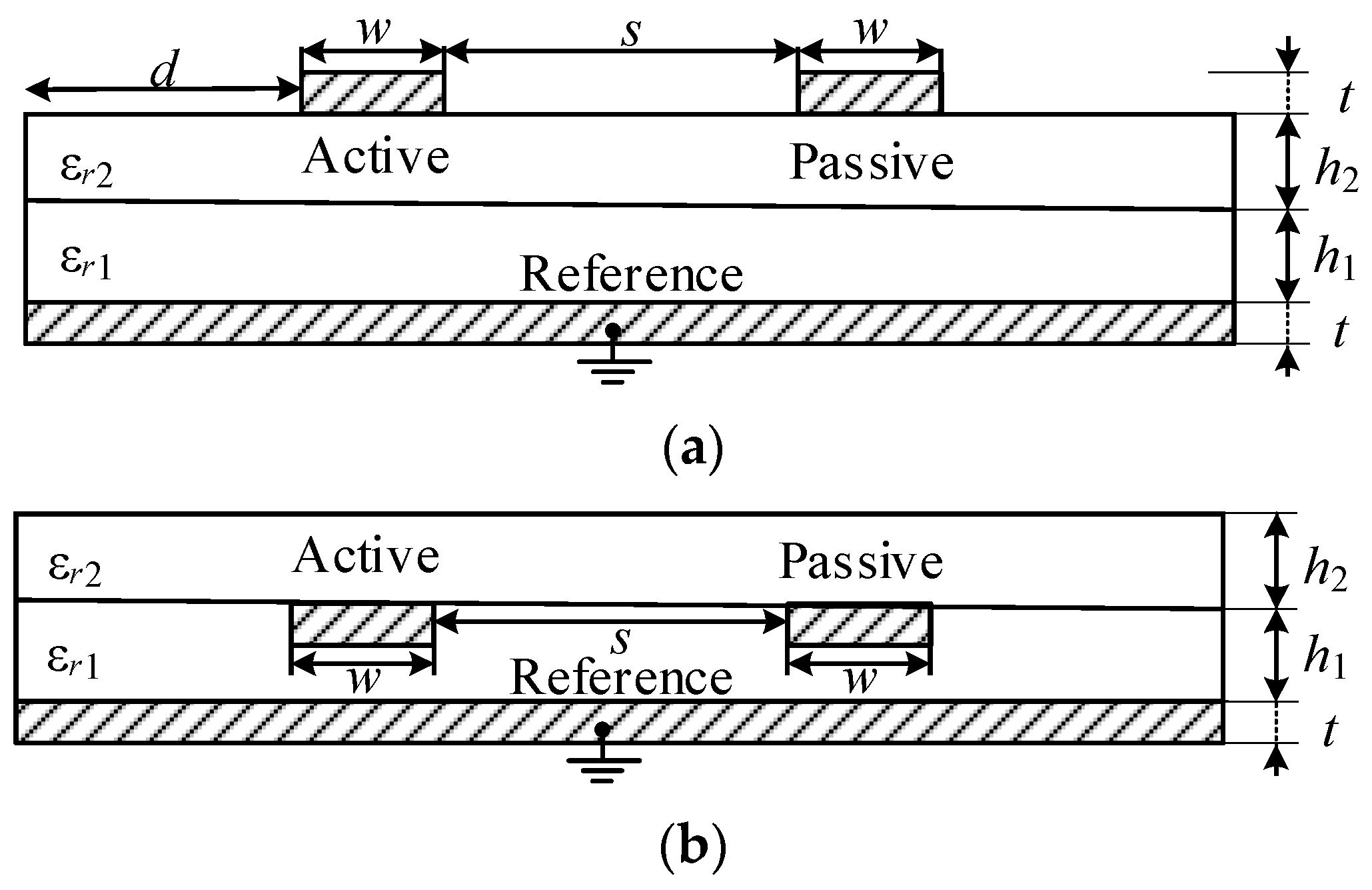
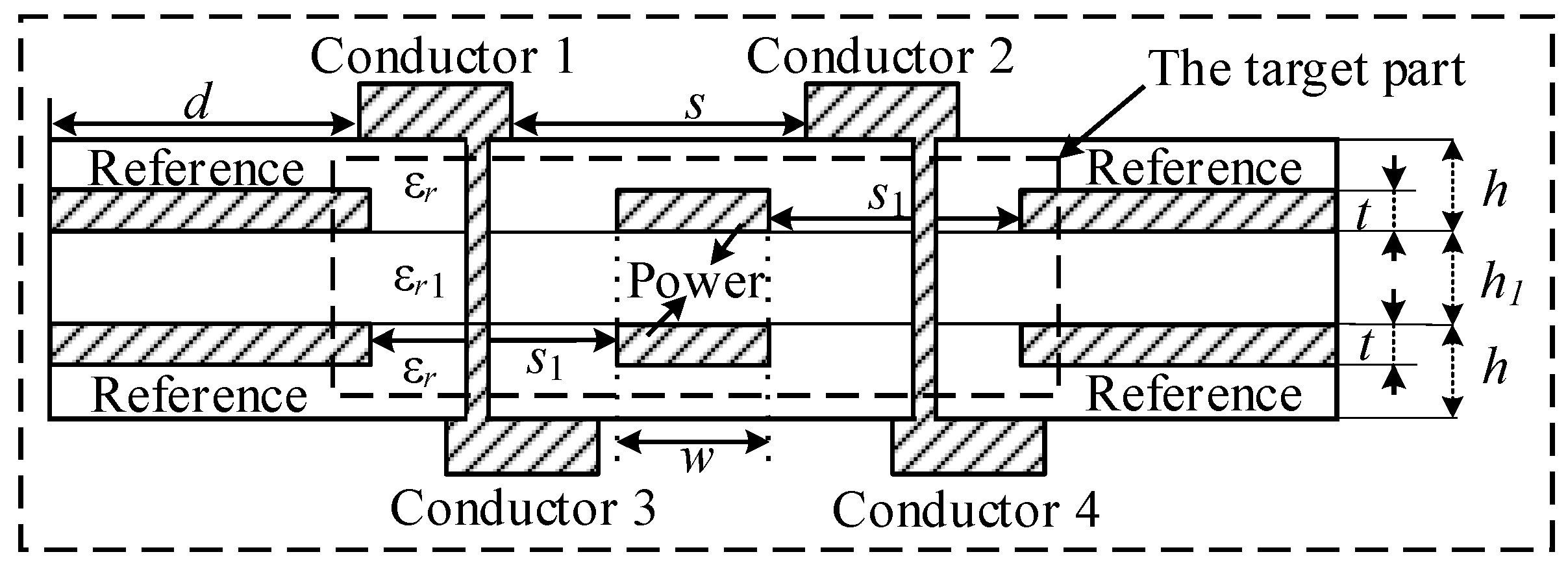
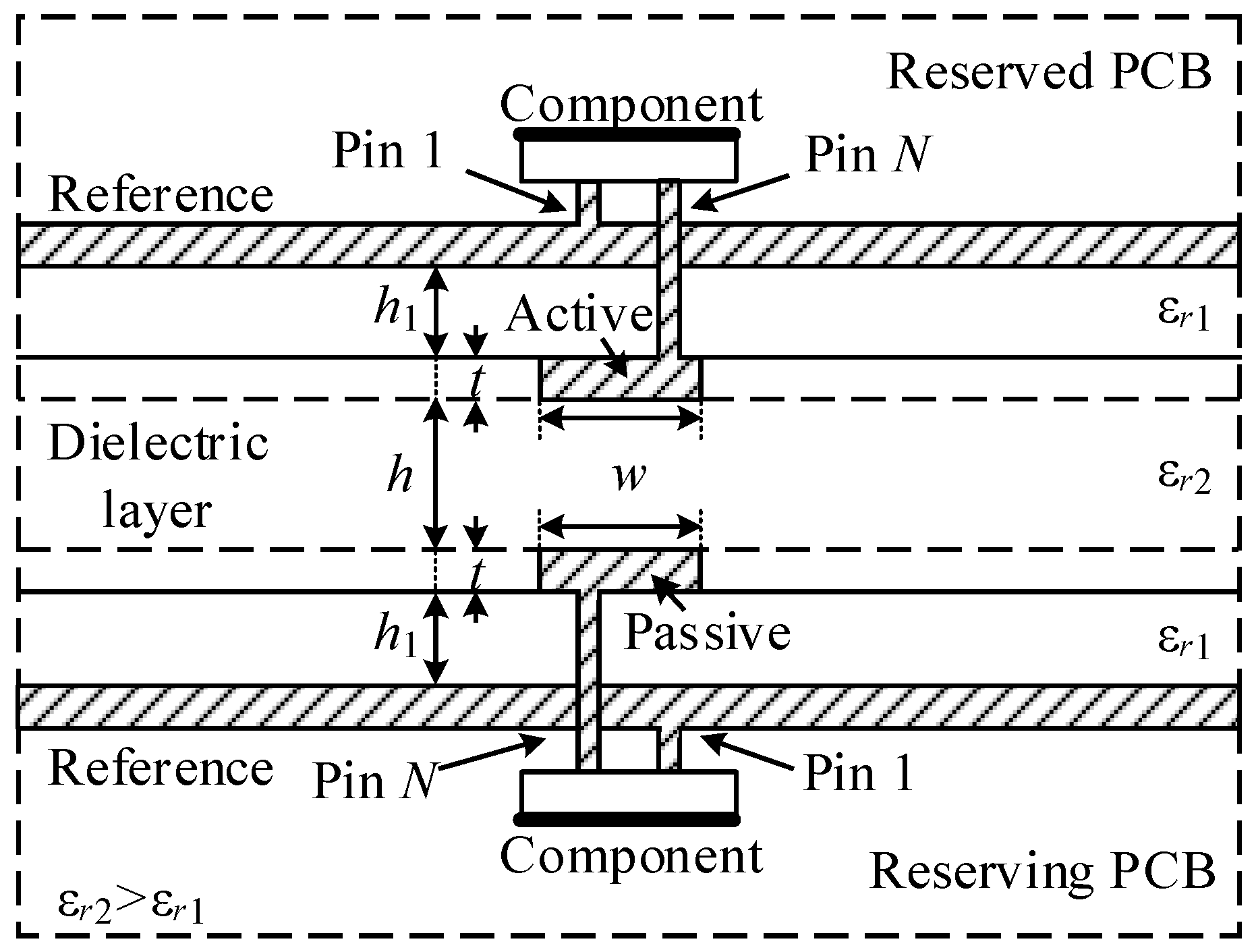
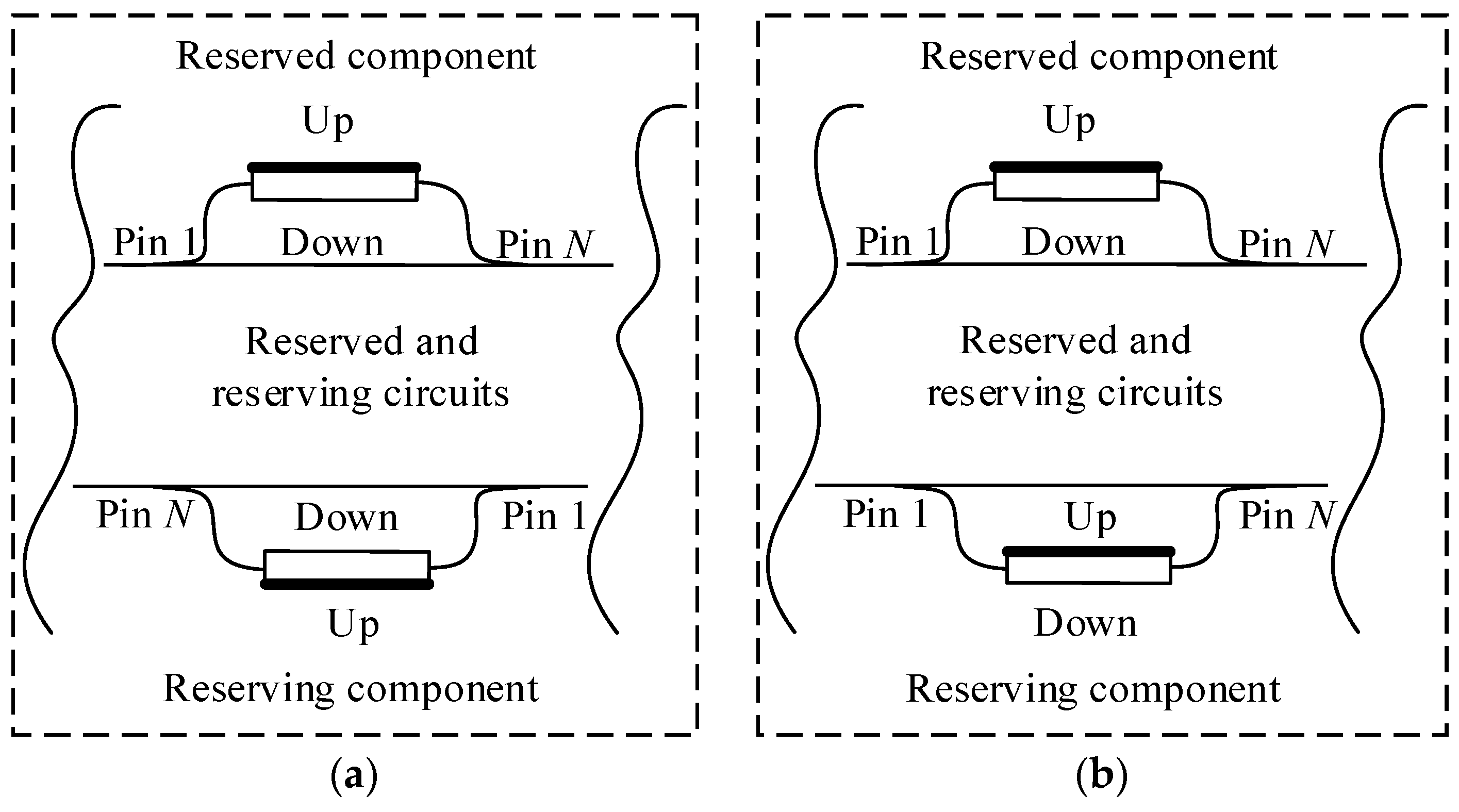
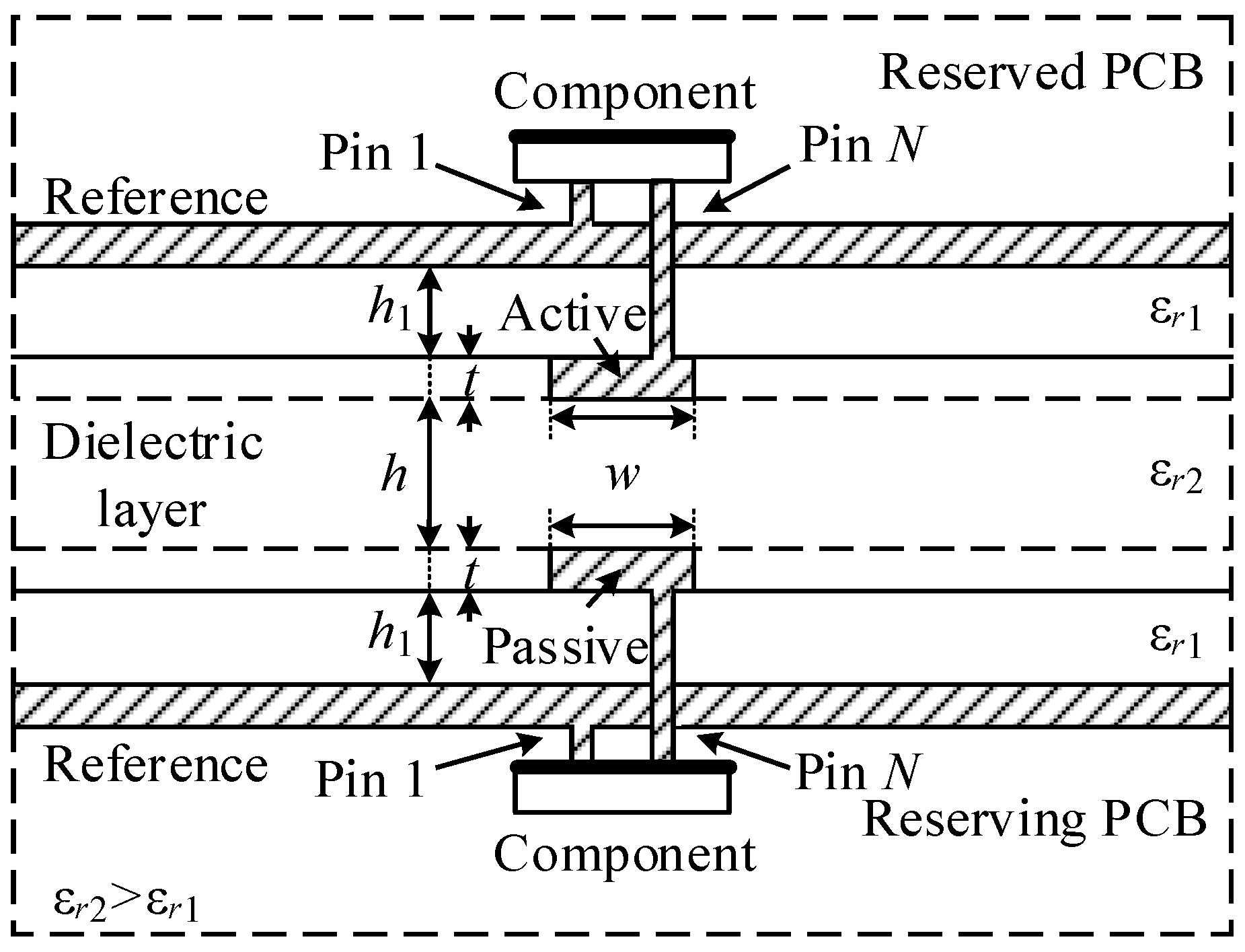


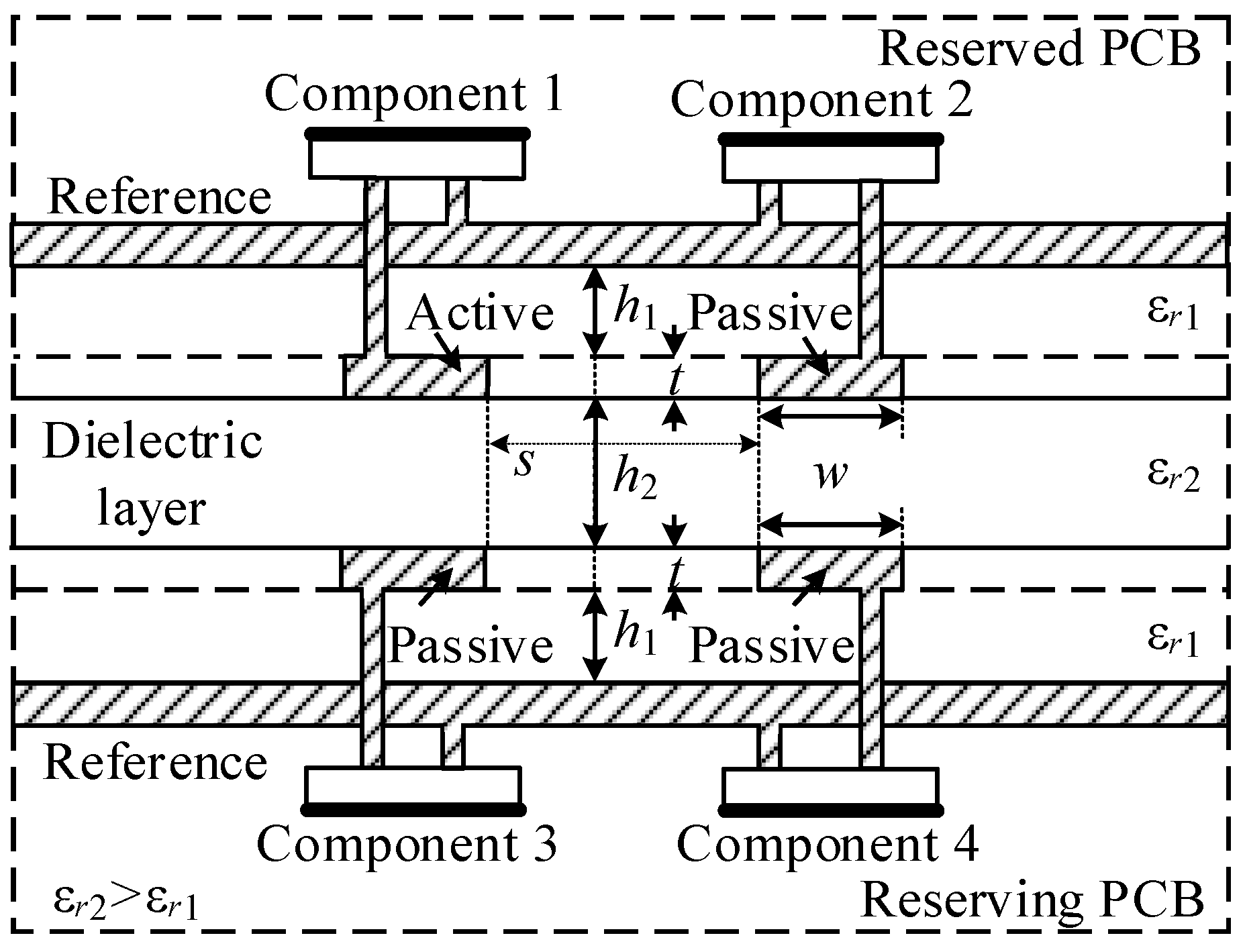

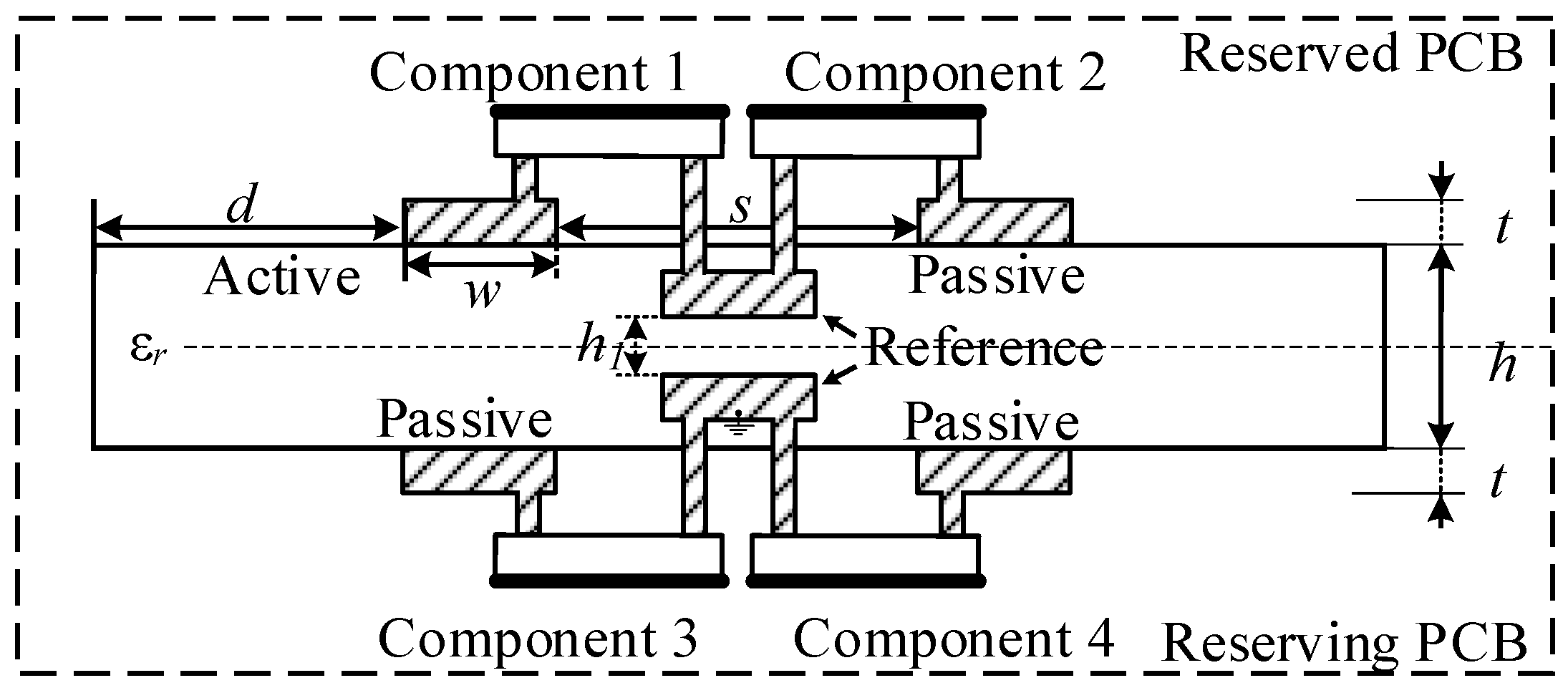
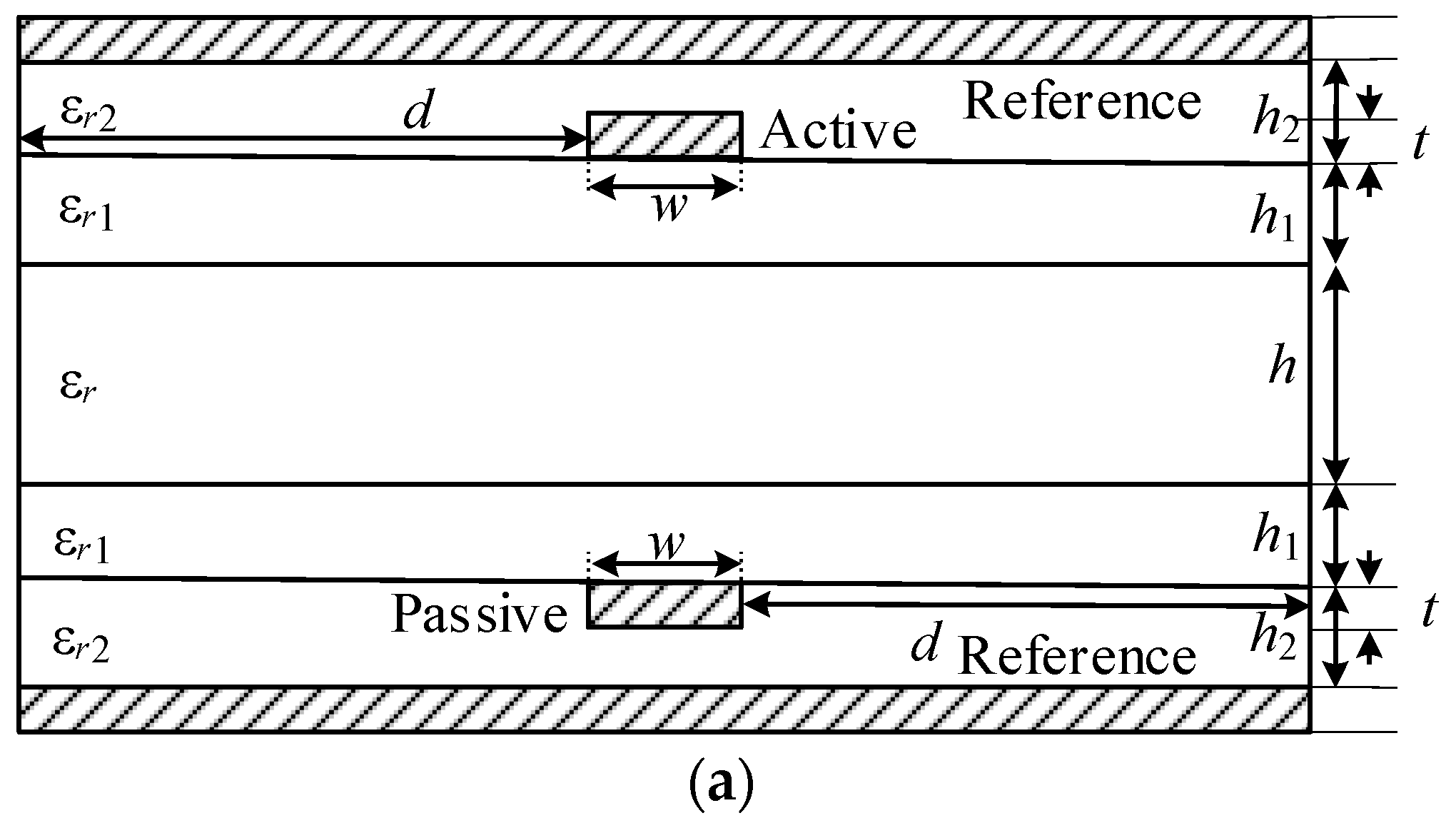
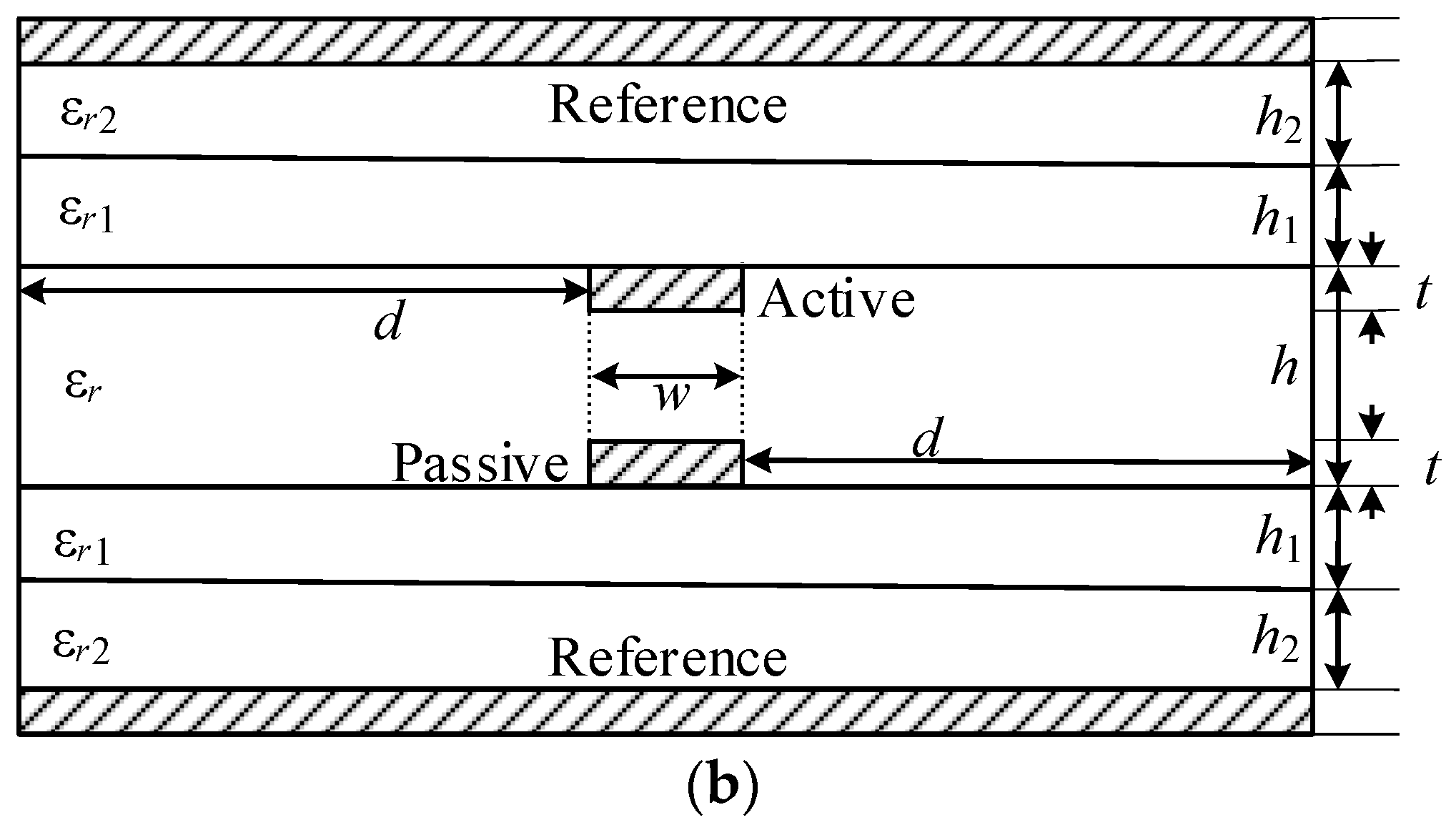

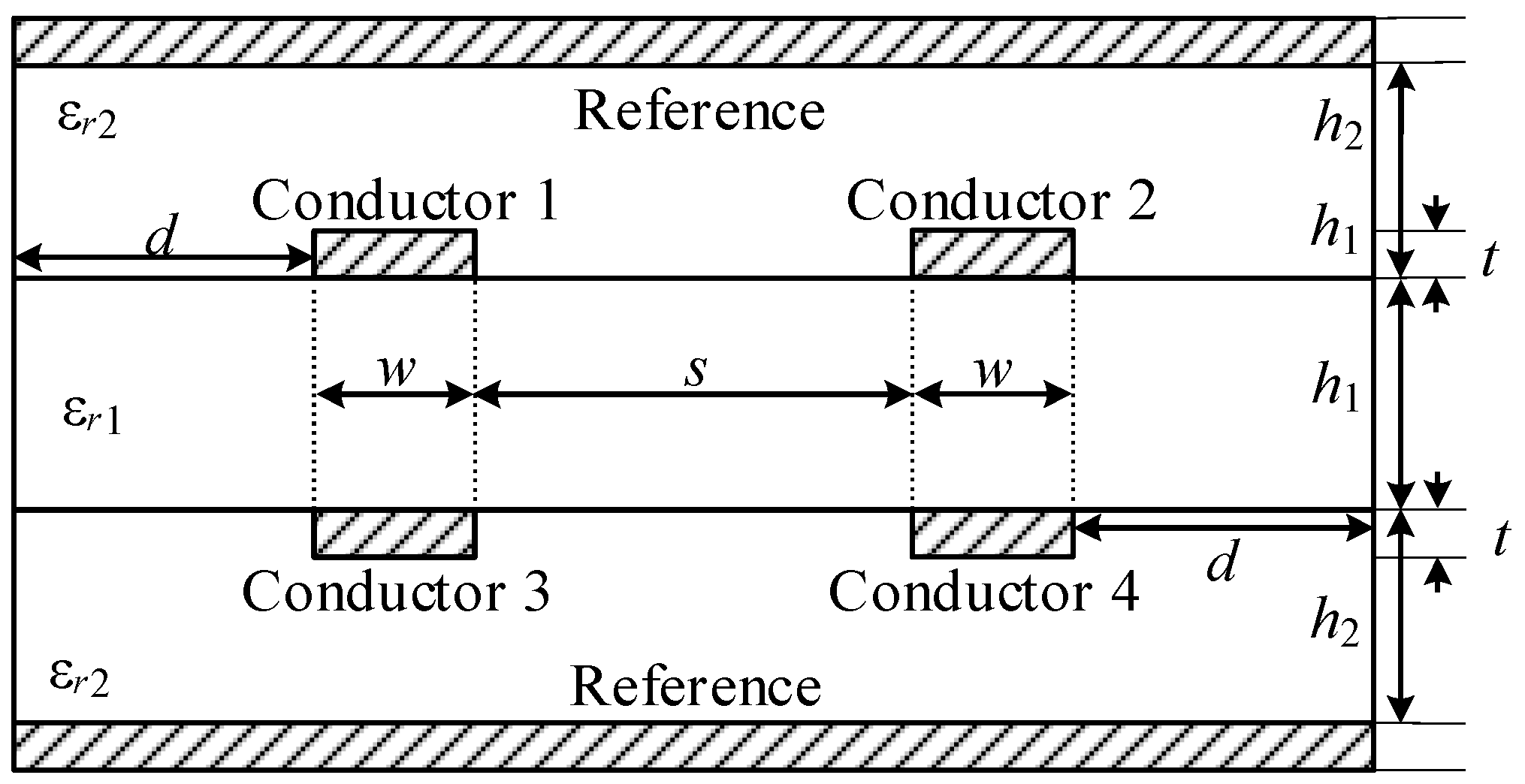
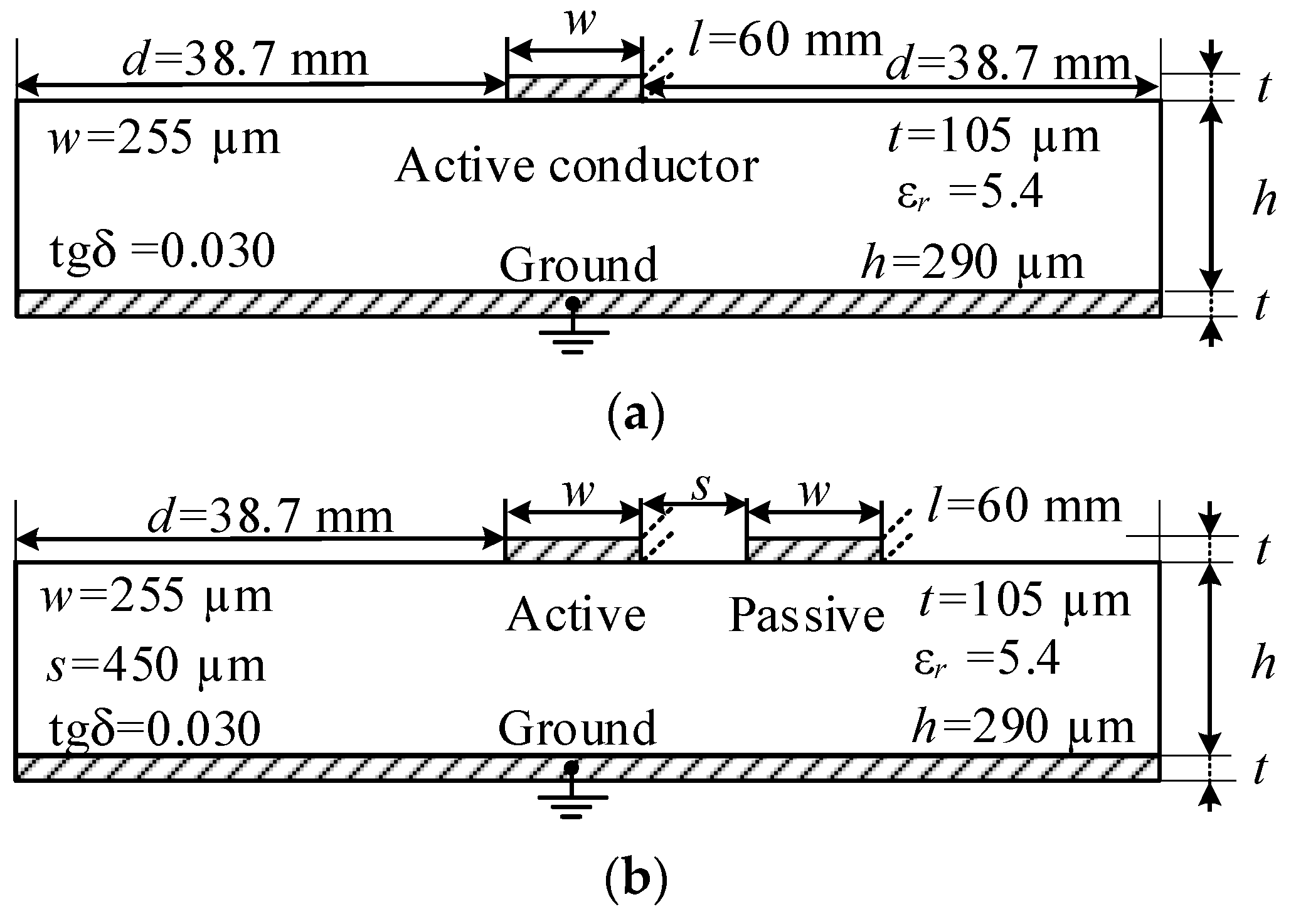
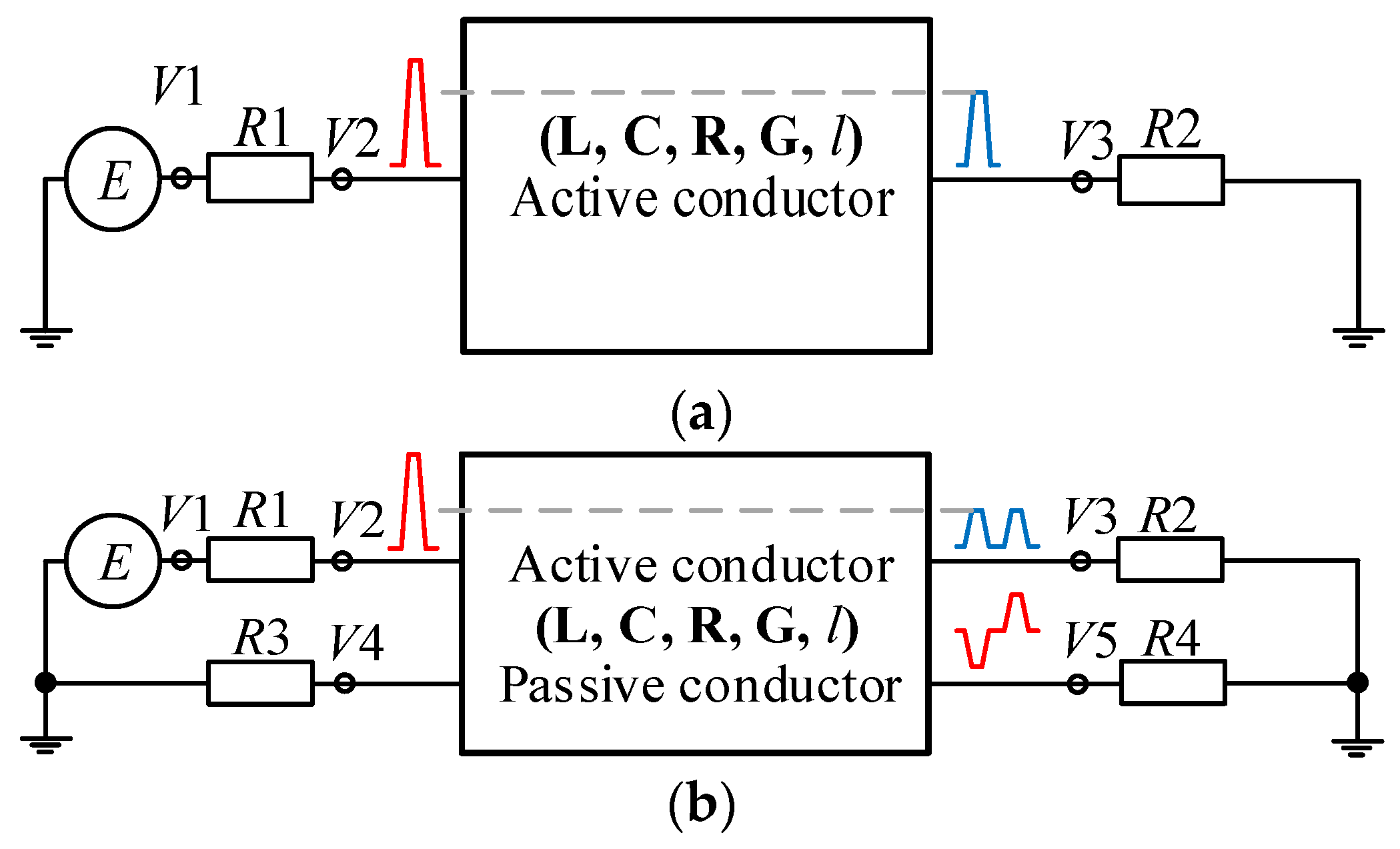

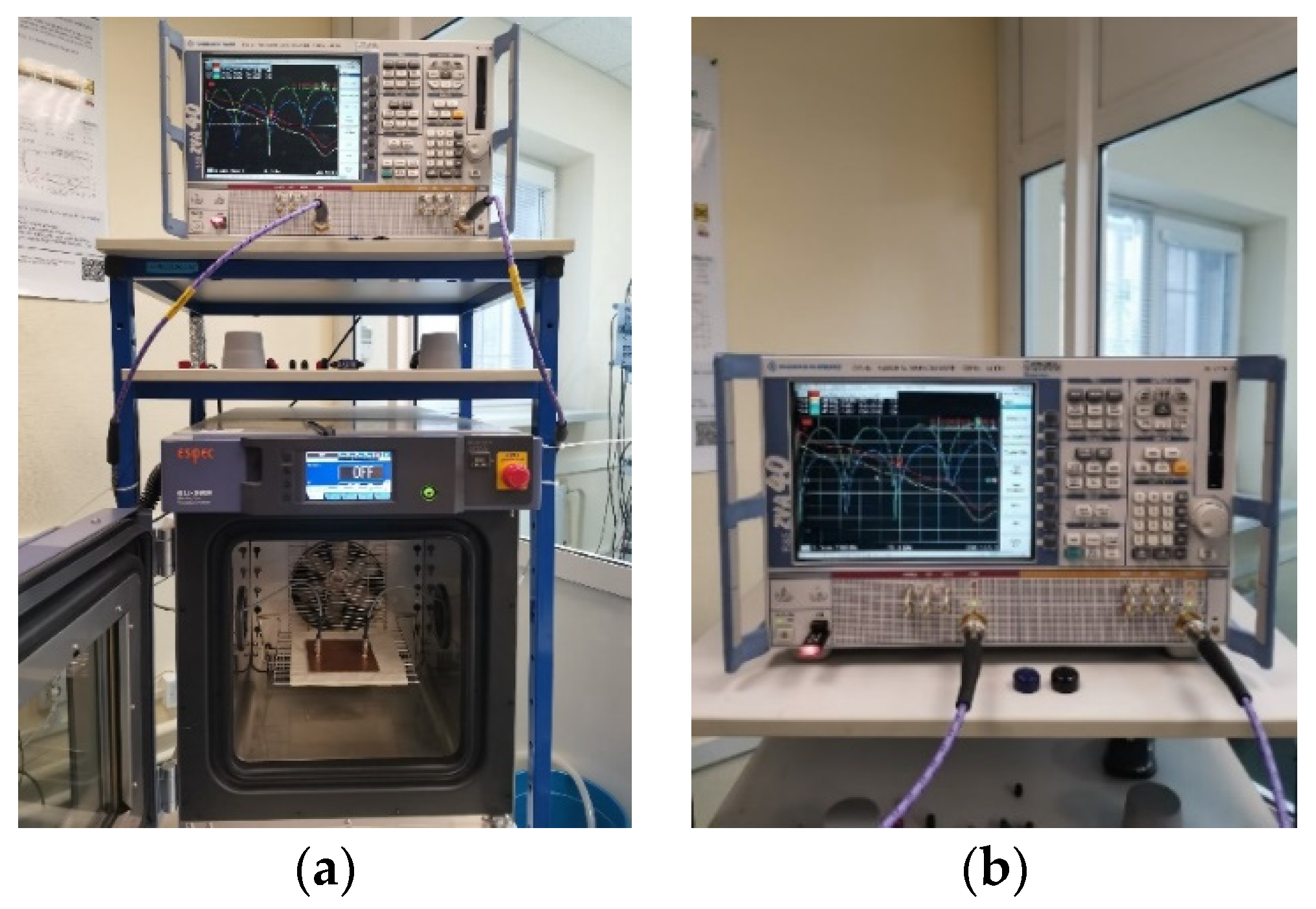
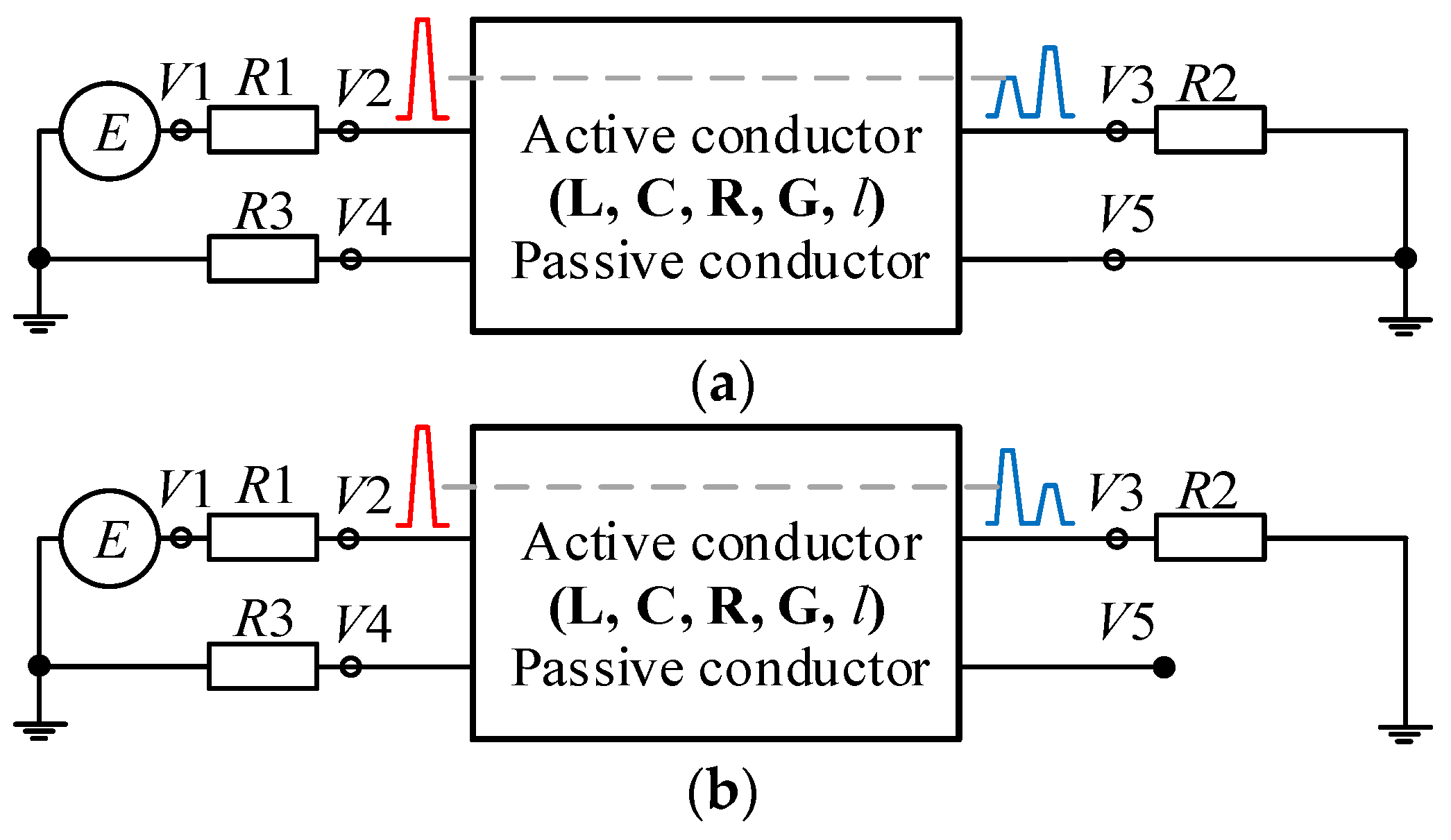
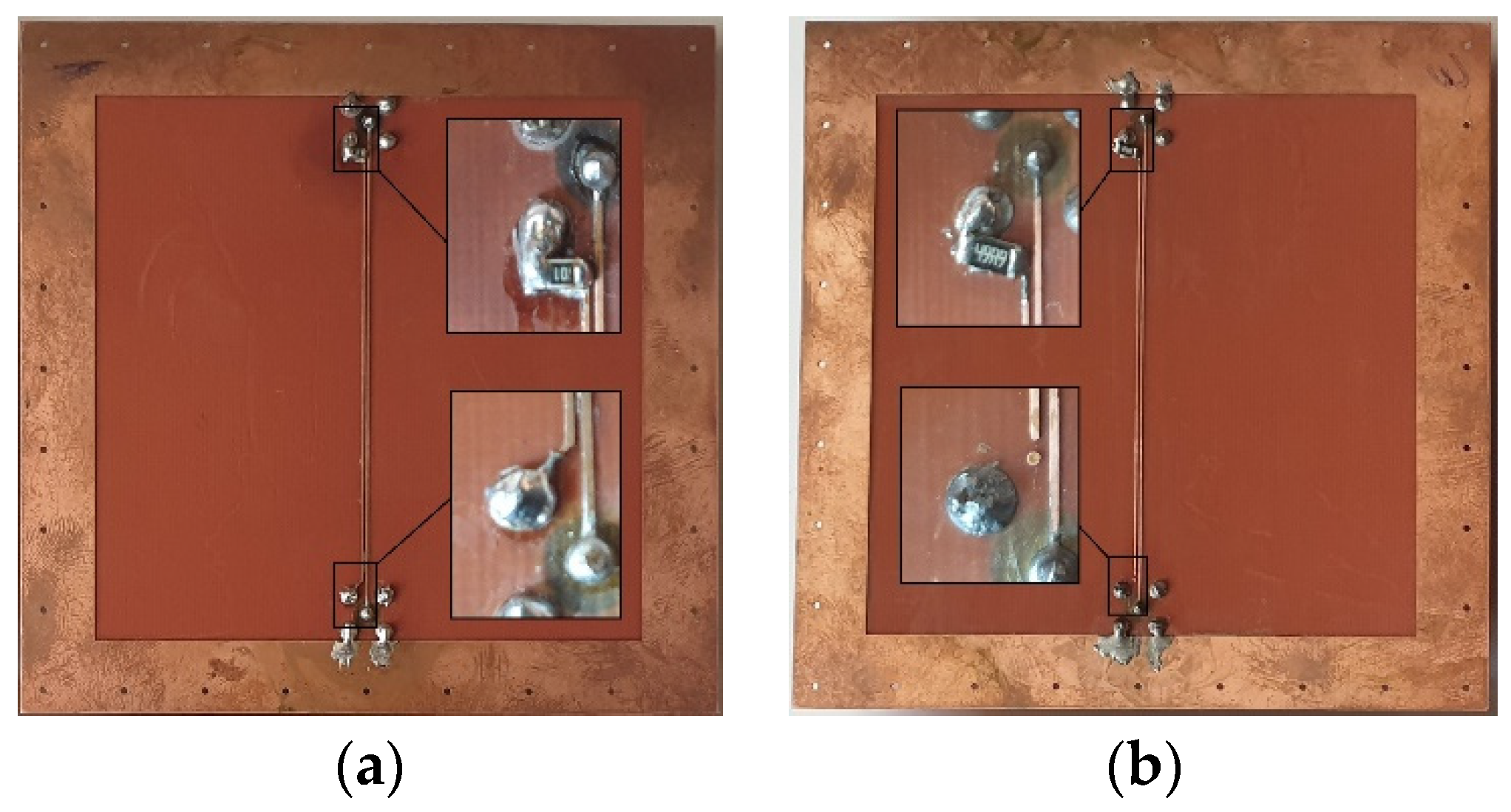
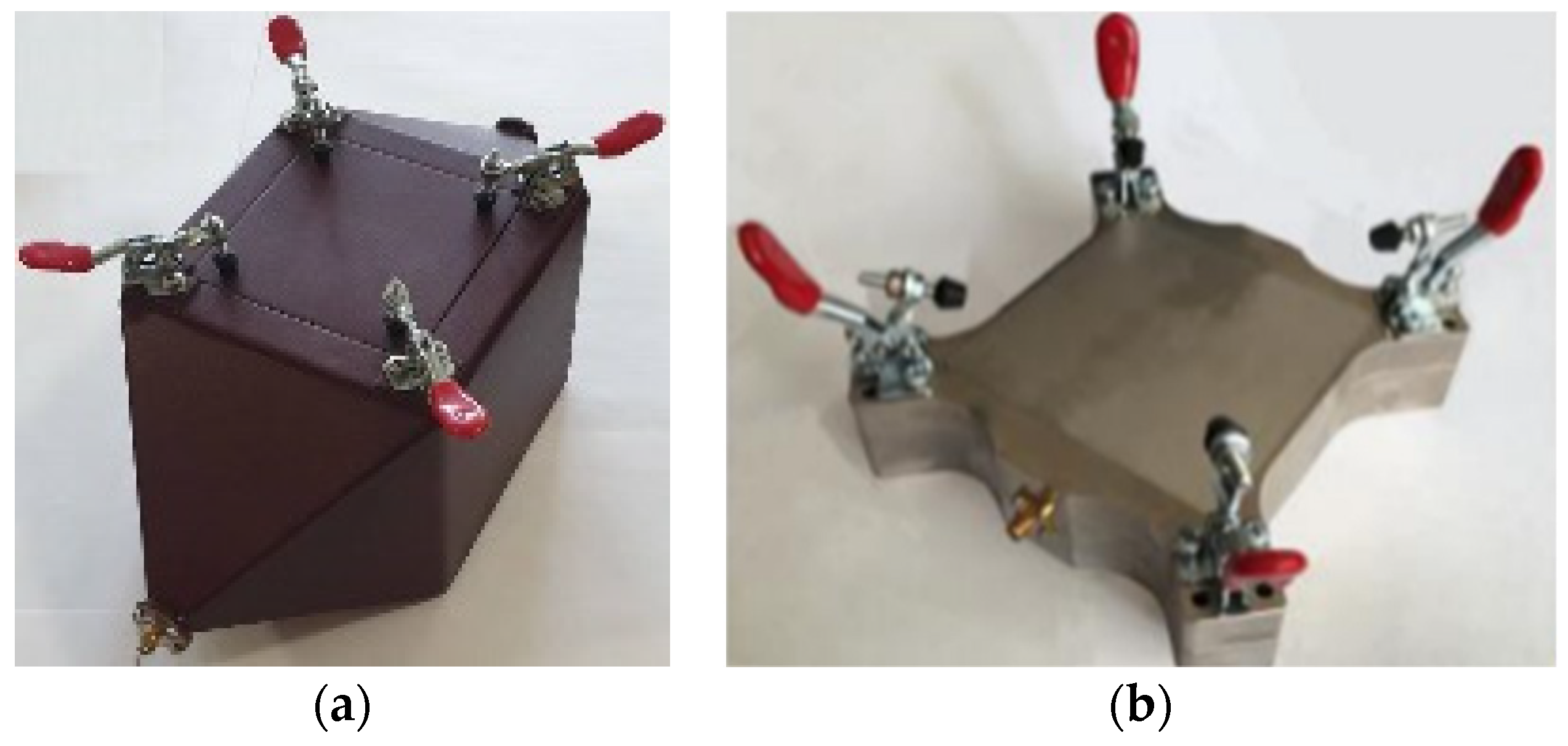
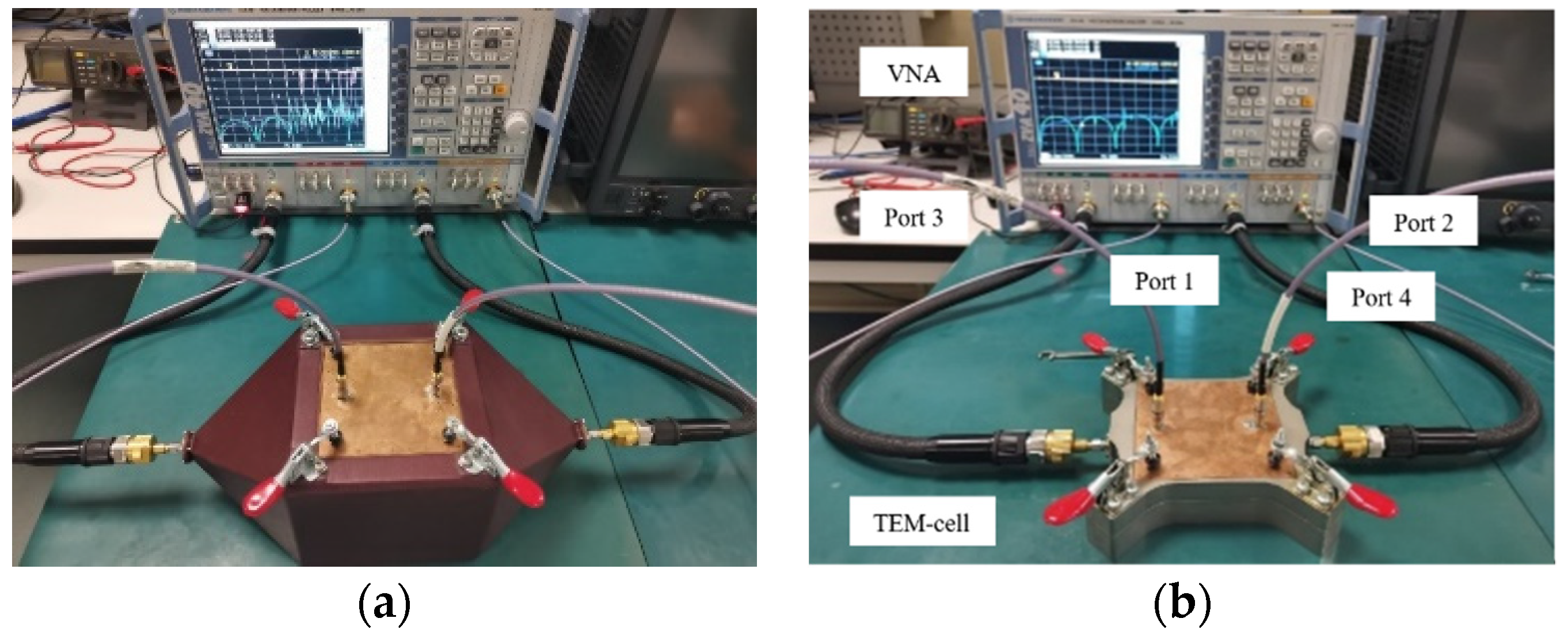
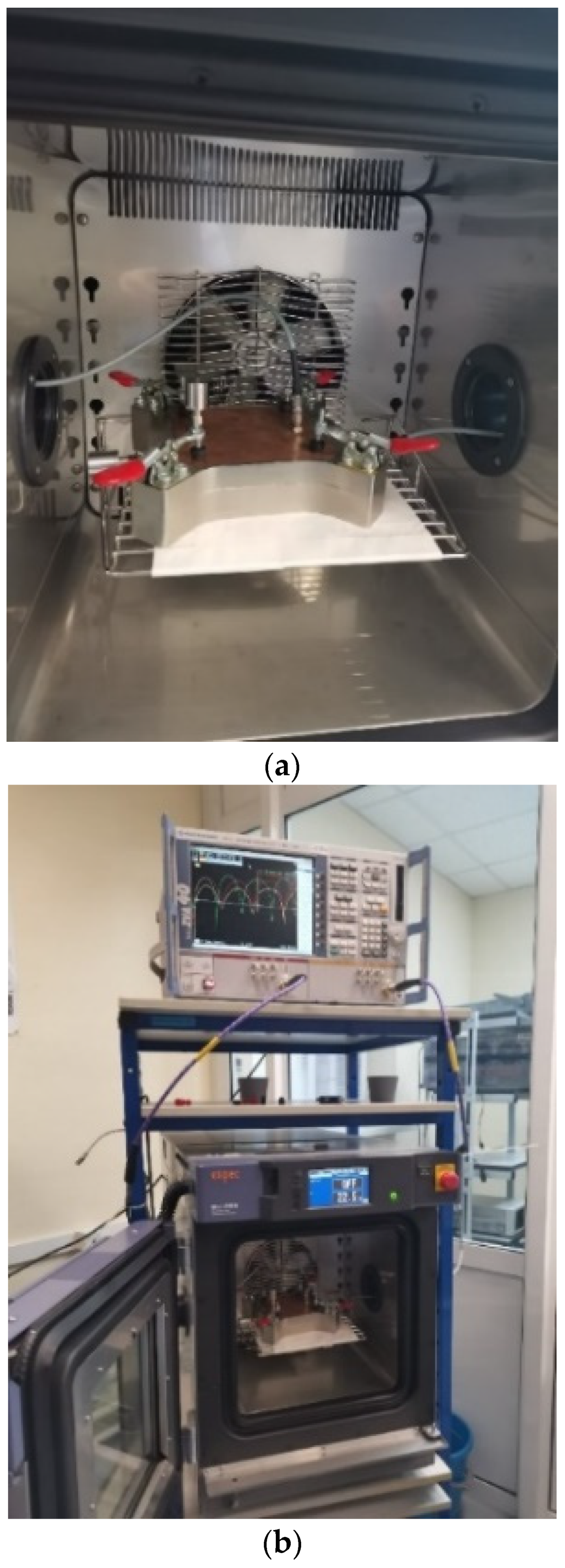

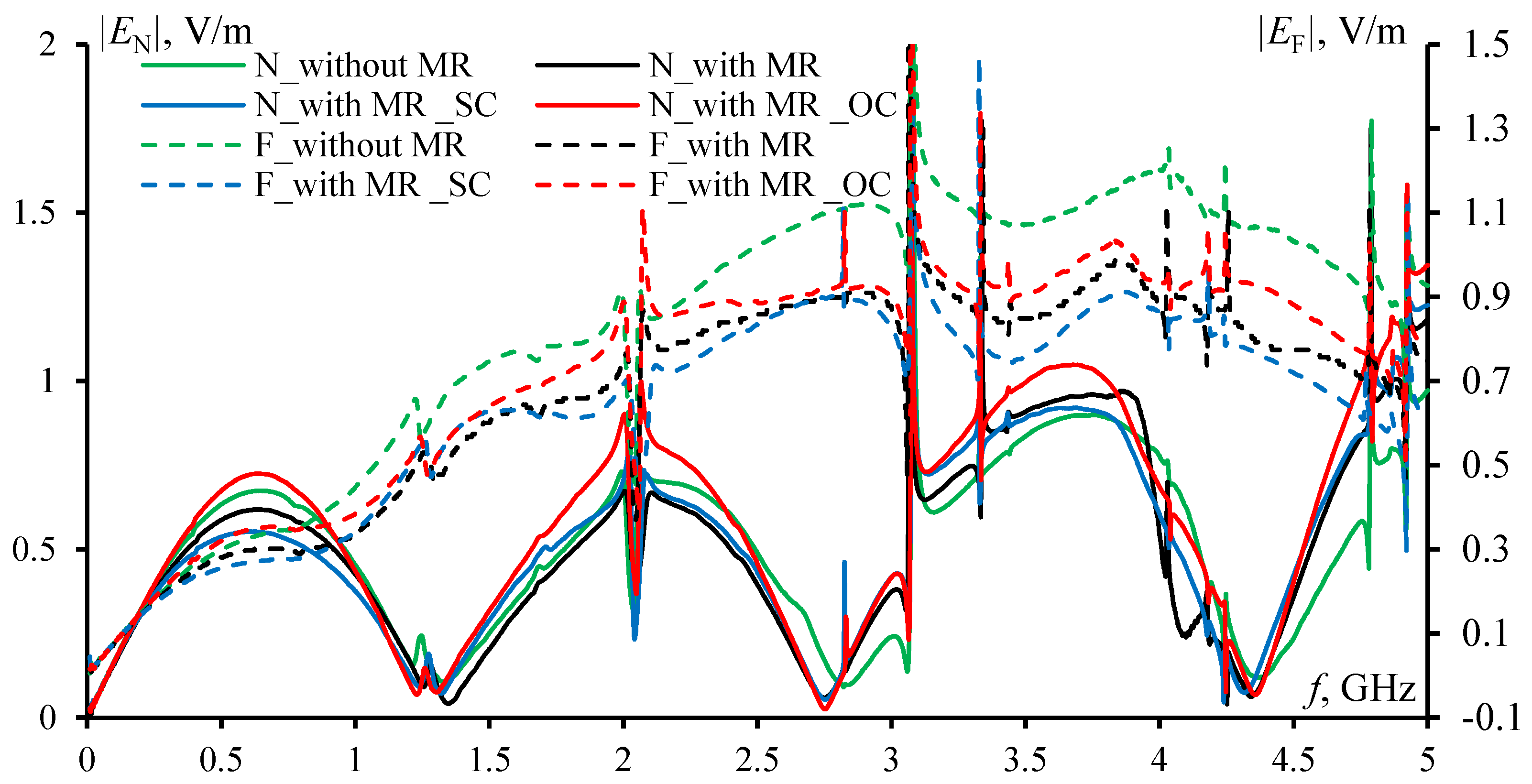
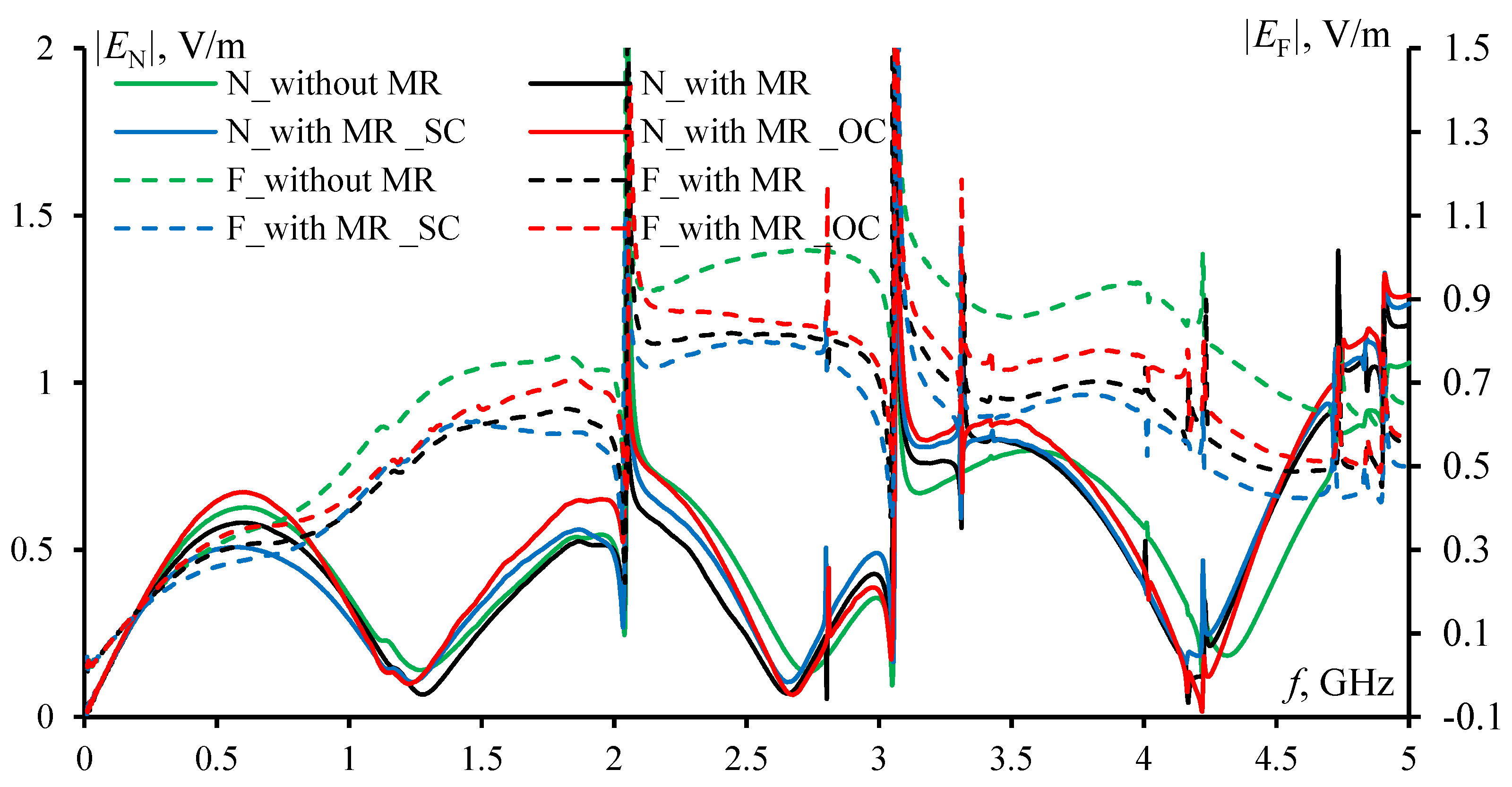

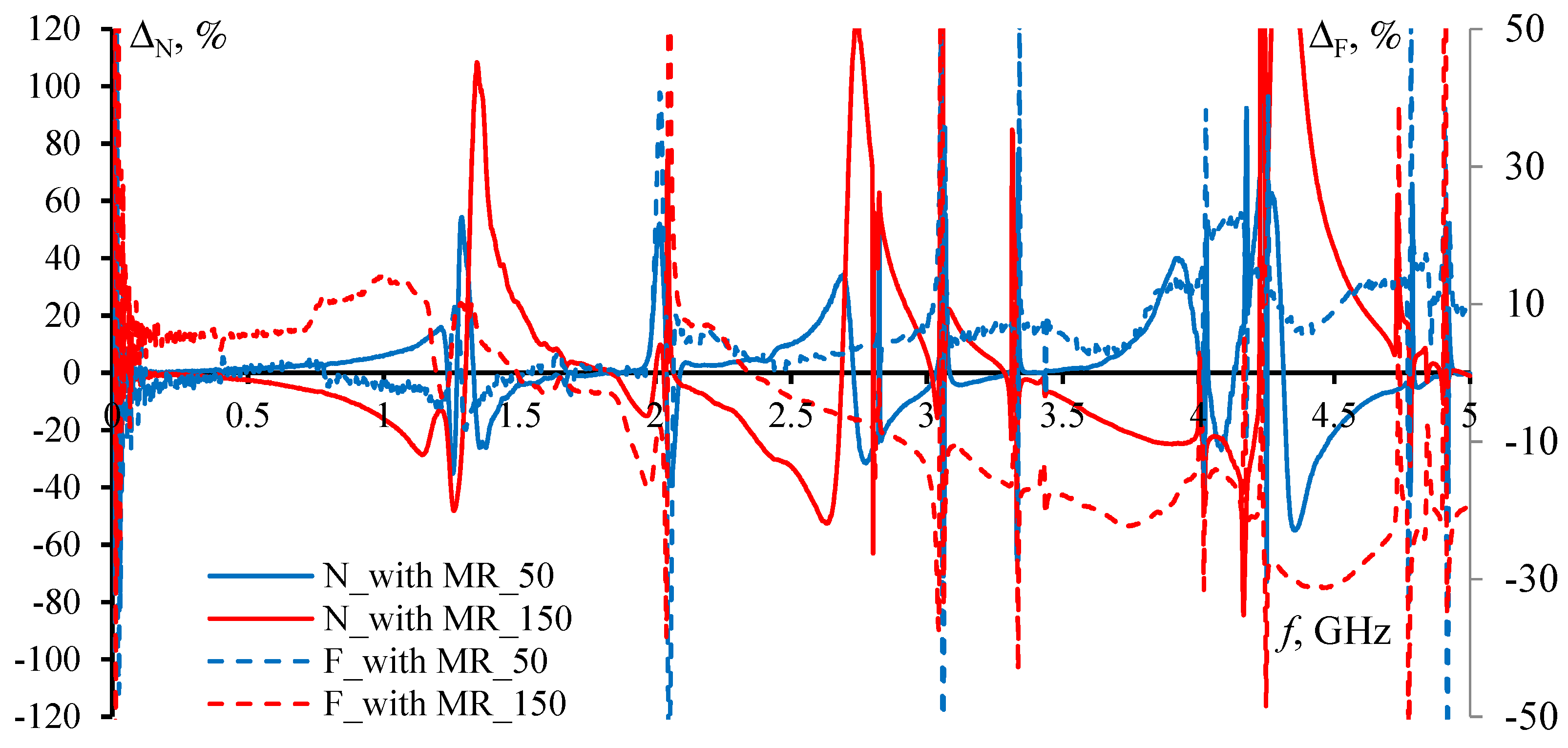

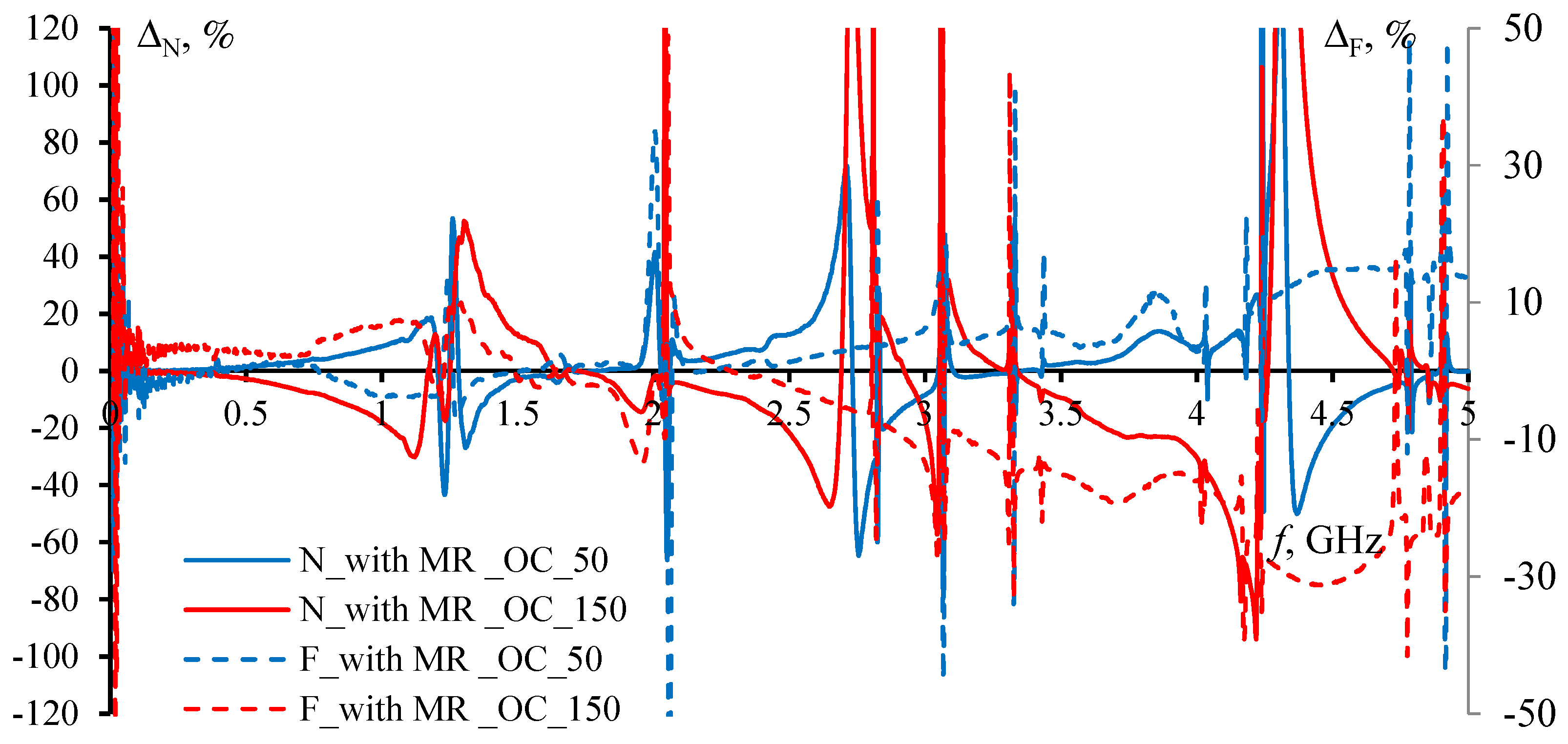
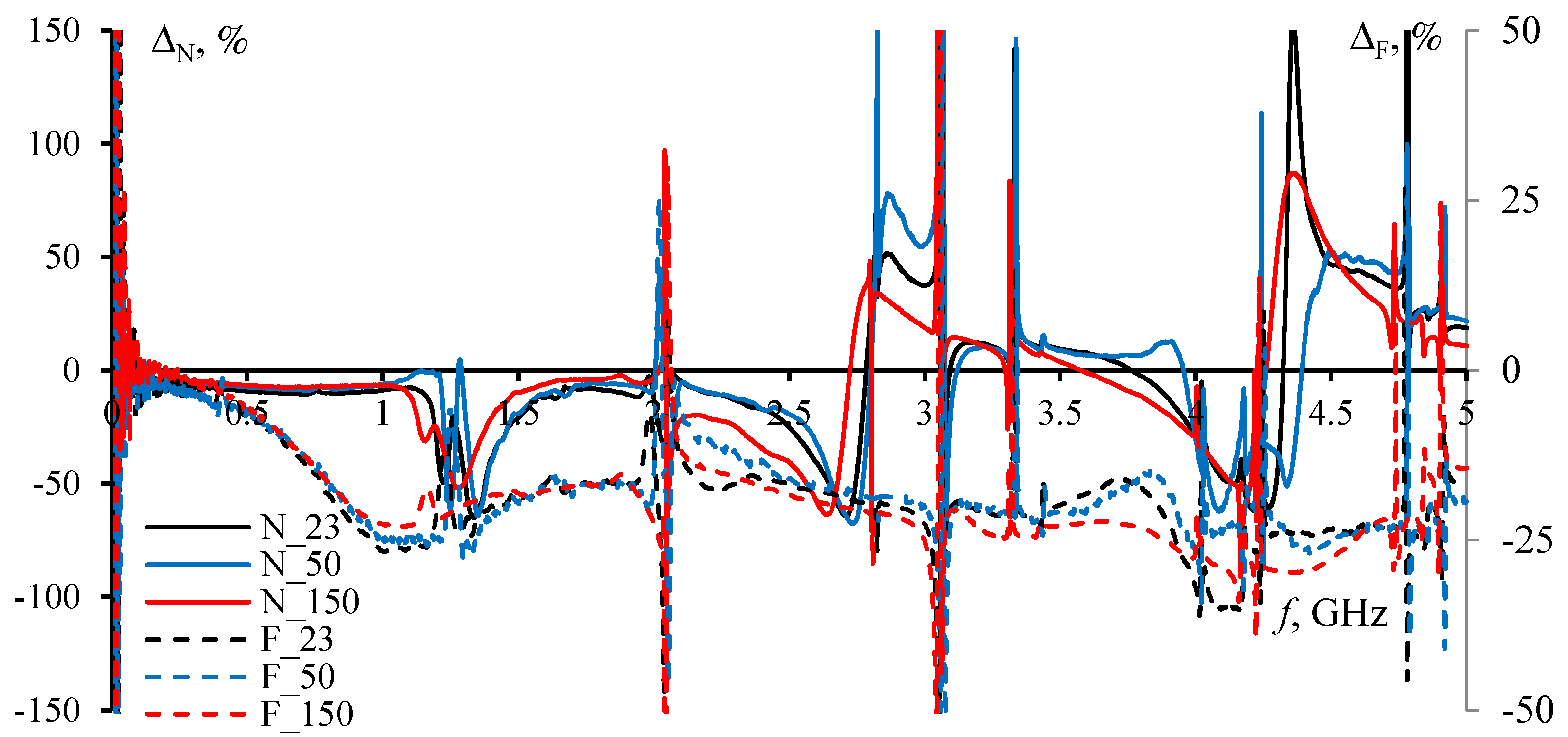
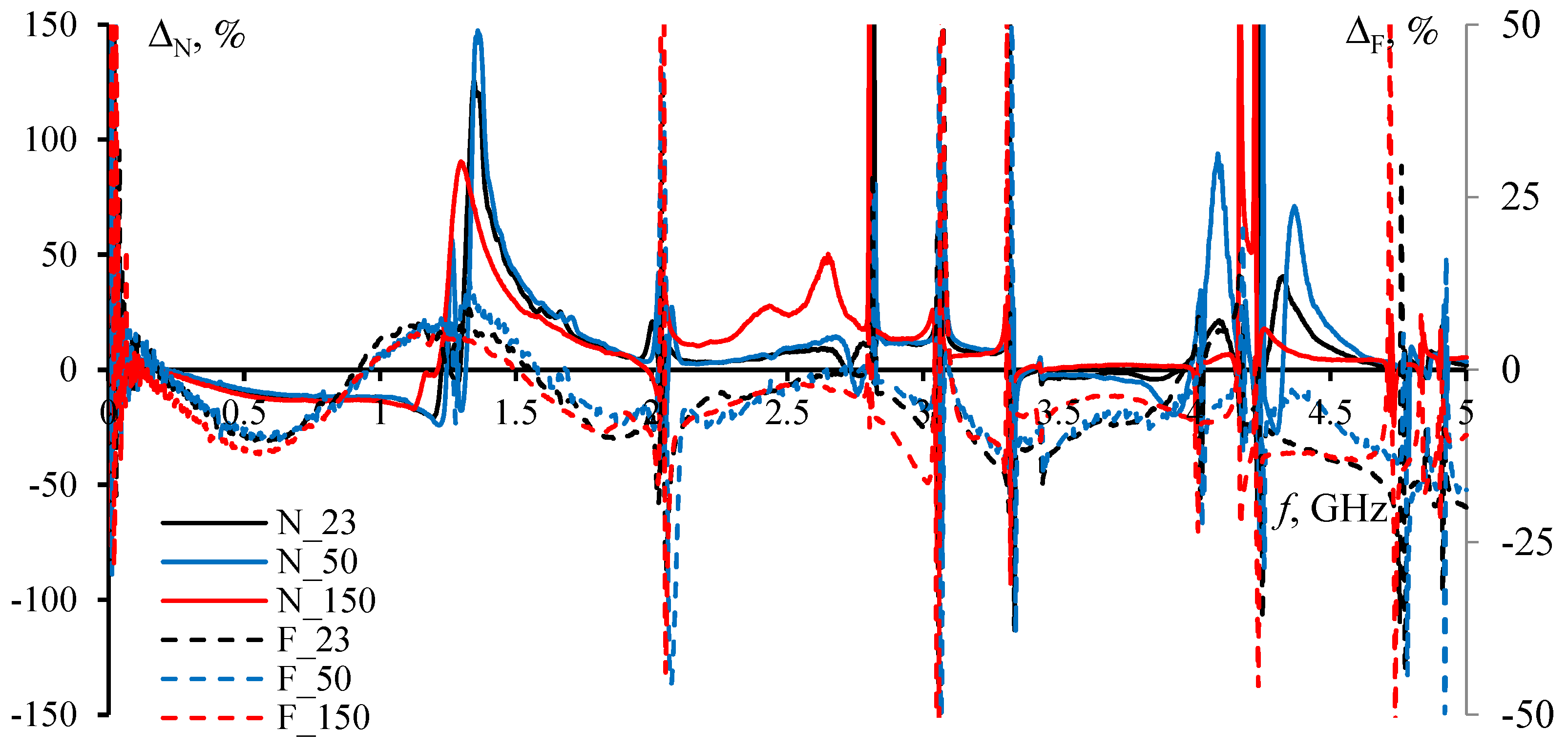

| No. | Method | Reliability | EMC | Stability after Failure | Cost | Ease of Implementation |
|---|---|---|---|---|---|---|
| 1 | Cold redundancy | + | − | + | + | + |
| 2 | Hot redundancy | + | − | − | + | − |
| 3 | EMI-filters | − | + | − | − | − |
| 4 | MR | + | + | + | + | − |
| No. | RF Patent No. | Date of Publication | Title |
|---|---|---|---|
| 1 | 2603850 | 10 December 2016 | Method of routing printed conductors in circuits with MR |
| 2 | 2603851 | 10 December 2016 | Method of routing printed conductors with additional dielectricin circuits with MR |
| 3 | 2603843 | 10 December 2016 | Method of modal reservation of PCBs |
| 4 | 2762336 | 20 December 2021 | Method of tracing a double-sided PCB for circuits with MR |
| 5 | 2732607 | 25 September 2020 | Method of single MR of meander turns |
| 6 | 2752232 | 23 July 2021 | Method of routing printed conductors with additional dielectricin circuits with double MR |
| 7 | 2752233 | 23 July 2021 | Method of routing printed conductors on two-layered PCBs outside and inside the signal layers for circuits with reservation |
| 8 | 2779536 | 8 September 2022 | Method of routing printed power conductors in circuits with MR |
| 9 | 2614156 | 23 March 2017 | Method of arranging the outer components on PCBs with MR |
| 10 | 2693838 | 5 July 2019 | Method of assembling non-molded radioelectronic components on PCBs with MR |
| 11 | 2624637 | 5 July 2017 | Method of arranging the inner components on the PCBs with MR |
| 12 | 2603848 | 10 December 2016 | Method of modal reservation in flat cables |
| 13 | 2663230 | 2 August 2018 | Method of triple MR in multilayered PCBs |
| 14 | 2738955 | 21 December 2020 | Method of triple MR of PCB conductors |
| 15 | 2751672 | 15 July 2021 | Method of arranging printed conductors in circuits with MR |
| 16 | 2754078 | 26 August 2021 | Method of arranging multilayer PCBs with MR outside and inside the signal layers |
| 17 | 2770516 | 18 April 2022 | Method of switching circuits with double MR after failures |
| 18 | 2767190 | 16 March 2022 | Method of switching circuits with triple MR after failures |
| No. | Reference | Research | Notes |
|---|---|---|---|
| 1 | [42] | New algorithm able to give accurate results with less computational costs to obtain the far field electric intensity from a test structure with MR | Comparison of the results of the proposed algorithm with those obtained using the electrodynamic approach (MoM) showed good consistency |
| 2 | [43] | Testing the proposed algorithm on wires with dielectric insulation | When increasing the dielectric permittivity, the wave impedance of a single wire decreased and the current amplitudes increased when compared to values from a wire without insulation |
| 3 | [44] | Obtaining the RE from MR-based PCBs using the electrodynamic approach (FDTD) | Using MR reduced RE from PCBs |
| 4 | [45] | Analysis of the MR implementation effect on PCB RE and comparing the results of the proposed algorithm with those obtained using FDTD | MR application reduced RE from PCBs, proven by two different approaches |
| 5 | [59] | Obtaining the frequency dependences of the S-parameters of PCB prototypes with MR experimentally and comparing the results with those obtained using TALGAT software | MR did not affect the useful signal and the compared results showed good agreement, with an average difference between them being up to 5 dB |
| 6 | [60] | Obtaining the frequency dependences of the S-parameters of PCB prototypes with MR after failure experimentally and comparing the results with those obtained using TALGAT software | The level of transmission ratio for the board with MR was lower than for the board without it even after failure, without affecting the useful signal, except some frequencies of the studied domain, due to the frequency shift |
| 7 | [63] | The RE levels from PCBs with MR were estimated before and after failure experimentally up to 2 GHz in a classical TEM-cell | The level of RE for the board with MR was lower than for the board without it even after failures, except at some frequencies of the studied domain, due to the frequency shift |
| 8 | [64] | The RE levels from PCBs with MR were estimated before and after failure experimentally up to 5 GHz in a Mini-TEM-cell | The possibility of using the MR layout and tracing approach was experimentally proven up to 5 GHz to both increase the reliability and ensure the electromagnetic compatibility, in terms of conducted emissions as well as radiated emissions |
| 9 | [65] | Obtaining the frequency dependences of the S-parameters of PCB prototypes with MR under climate impacts experimentally | The level of the transmission ratio for the board with MR was lower than for the board without it. Meanwhile this reduction did not affect the useful signal. Moreover, all S-parameters of the prototypes decreased with increasing temperature and increased with decreasing temperature compared to the results obtained at room temperature over the entire frequency range, except for the resonance frequencies |
| 10 | [66] | Obtaining the frequency dependences of the S-parameters of PCB prototypes with MR after short circuit failure under climate impacts experimentally | Radioelectronic devices which used the MR layout and tracing approach worked under any climate condition even after short circuit failure, which improved their reliability and immunity against EMI |
| 11 | [67] | Obtaining the frequency dependences of the S-parameters of PCB prototypes with MR after open circuit failure under climate impacts experimentally | Radioelectronic devices which used the MR layout and tracing approach worked under any climate condition even after open circuit failure, which improved their reliability and immunity against EMI |
| PCB | Δavg % | Near end ΔNavg, % | Far end ΔFavg, % |
|---|---|---|---|
| Without MR | ∑((U−50(f) − U23(f))/U23(f) %)/N | −0.8 | 3.1 |
| ∑((U150(f) − U23(f))/U23(f) %)/N | 3.7 | −6.0 | |
| With MR | ∑((U−50(f) − U23(f))/U23(f) %)/N | 1.6 | 0.7 |
| ∑((U150(f) − U23(f))/U23(f) %)/N | 6.0 | −6.3 | |
| With MR-SC | ∑((U−50(f) − U23(f))/U23(f) %)/N | 2.0 | 5.2 |
| ∑((U150(f) − U23(f))/U23(f) %)/N | 7.8 | −6.6 | |
| With MR-OC | ∑((U–50(f) − U23(f))/U23(f) %)/N | 2.7 | 3.9 |
| ∑((U150(f) − U23(f))/U23(f) %)/N | 2.7 | −7.0 |
| PCB, Δavg % | Temperature | Near end ΔNavg, % | Far end ΔFavg, % |
|---|---|---|---|
| MR-Without MR ∑((UMR(f) − UNOMR(f))/UNOMR(f) %)/N | 23 | −1.9 | −18.0 |
| −50 | −0.9 | −17.2 | |
| 150 | −2.6 | −18.4 | |
| With MR SC-With MR ∑((USCMR(f) − UMR(f))/UMR(f) %)/N | 23 | 6.3 | −5.3 |
| −50 | 7.6 | −4.4 | |
| 150 | 9.3 | −5.3 | |
| With MR OC-With MR ∑((UOCMR(f) − UMR(f))/UMR(f) %)/N | 23 | 17.3 | 8.8 |
| −50 | 18.9 | 8.5 | |
| 150 | 12.4 | 8.4 |
Publisher’s Note: MDPI stays neutral with regard to jurisdictional claims in published maps and institutional affiliations. |
© 2022 by the authors. Licensee MDPI, Basel, Switzerland. This article is an open access article distributed under the terms and conditions of the Creative Commons Attribution (CC BY) license (https://creativecommons.org/licenses/by/4.0/).
Share and Cite
Alhaj Hasan, A.; Gazizov, T.R. Ensuring the Reliability and EMC by Modal Reservation: A Brief History and Recent Advances. Symmetry 2022, 14, 2466. https://doi.org/10.3390/sym14112466
Alhaj Hasan A, Gazizov TR. Ensuring the Reliability and EMC by Modal Reservation: A Brief History and Recent Advances. Symmetry. 2022; 14(11):2466. https://doi.org/10.3390/sym14112466
Chicago/Turabian StyleAlhaj Hasan, Adnan, and Talgat Rashitovich Gazizov. 2022. "Ensuring the Reliability and EMC by Modal Reservation: A Brief History and Recent Advances" Symmetry 14, no. 11: 2466. https://doi.org/10.3390/sym14112466





